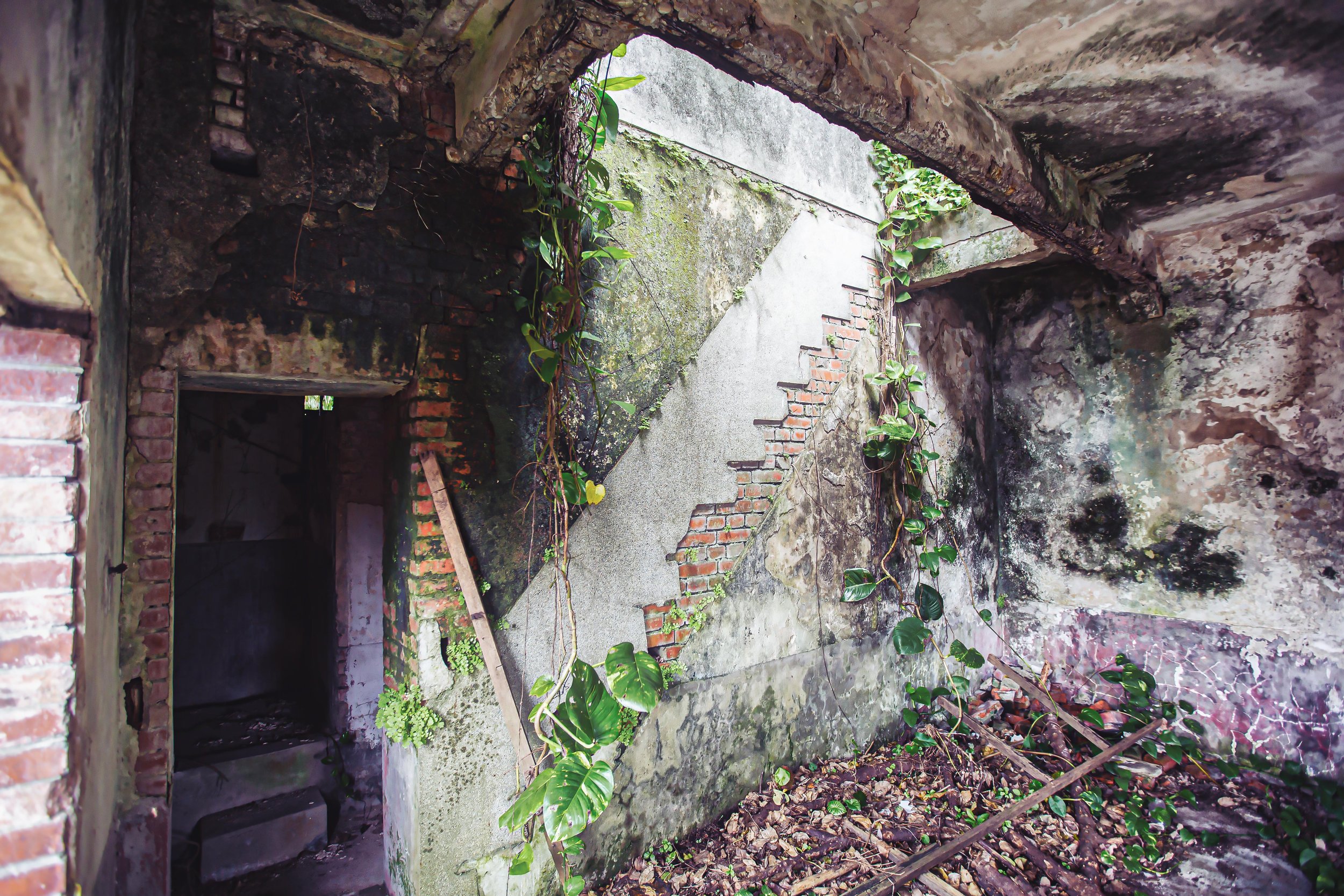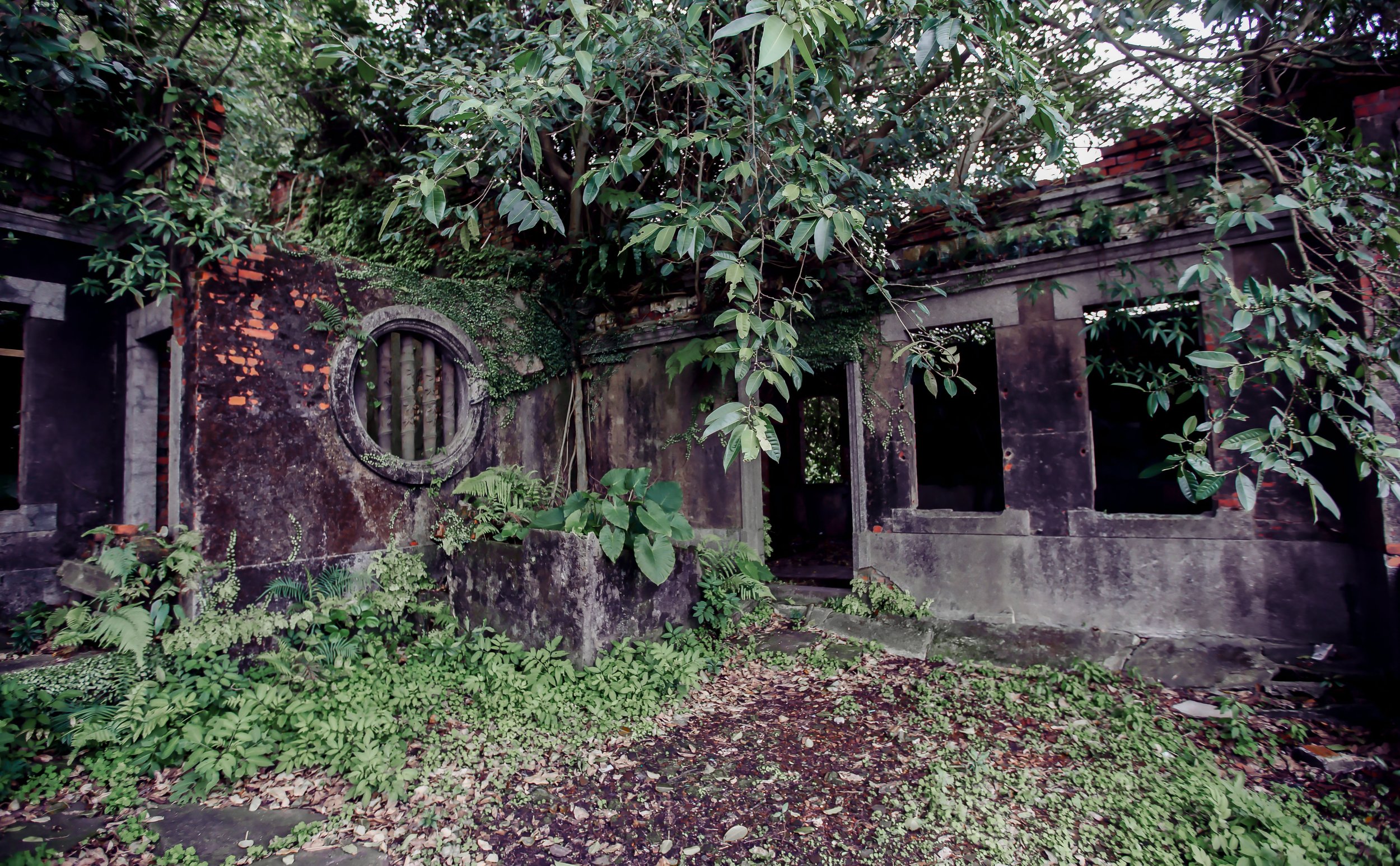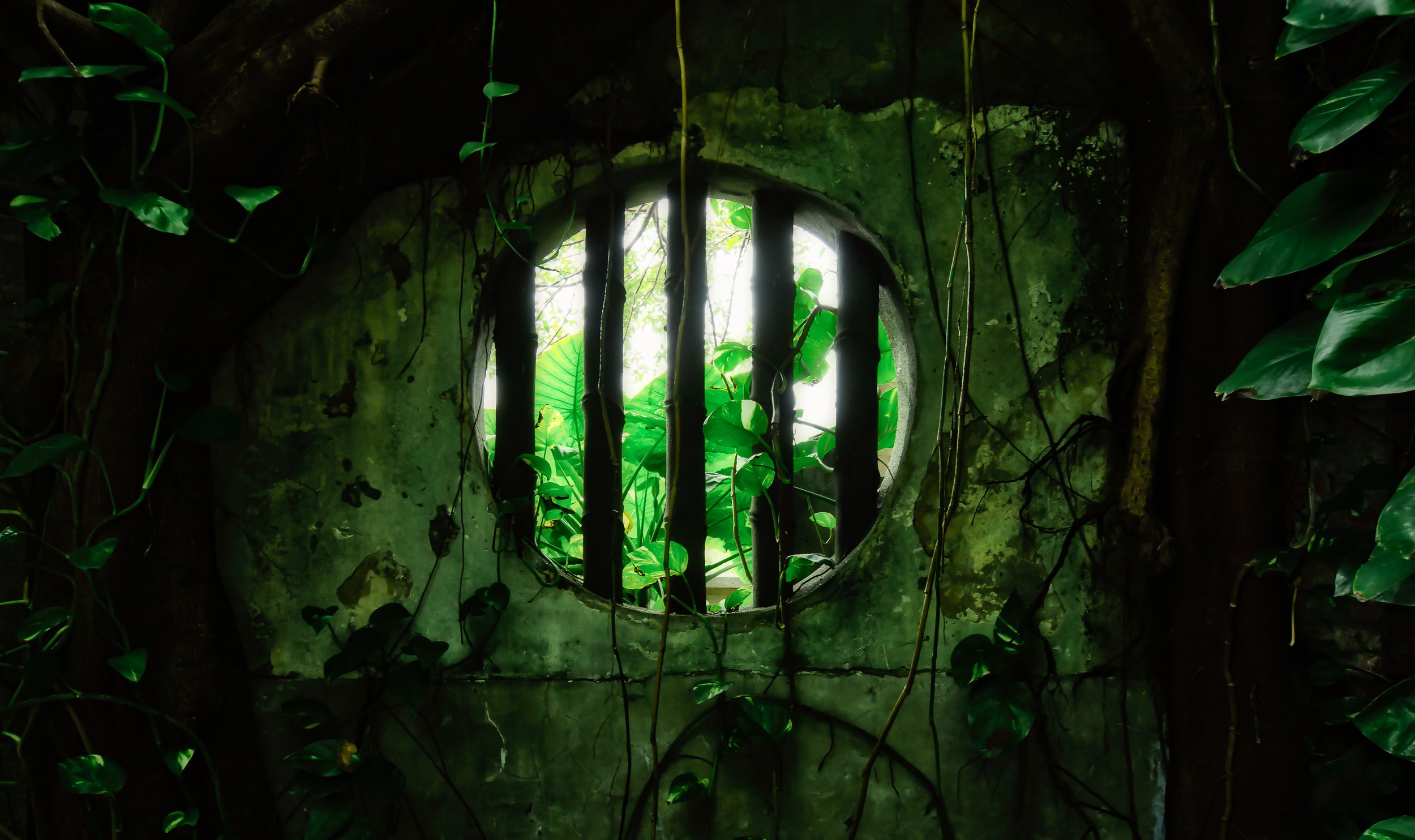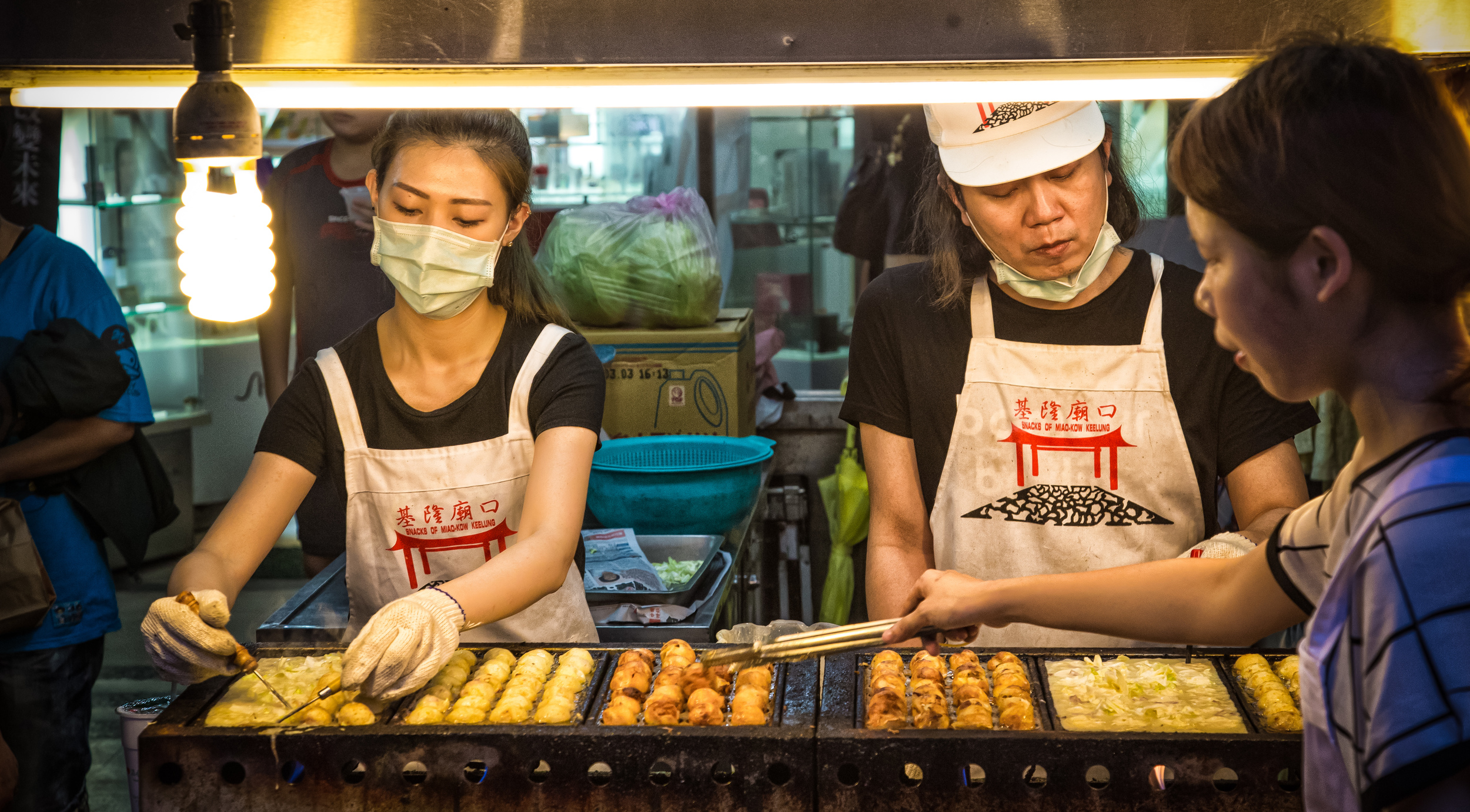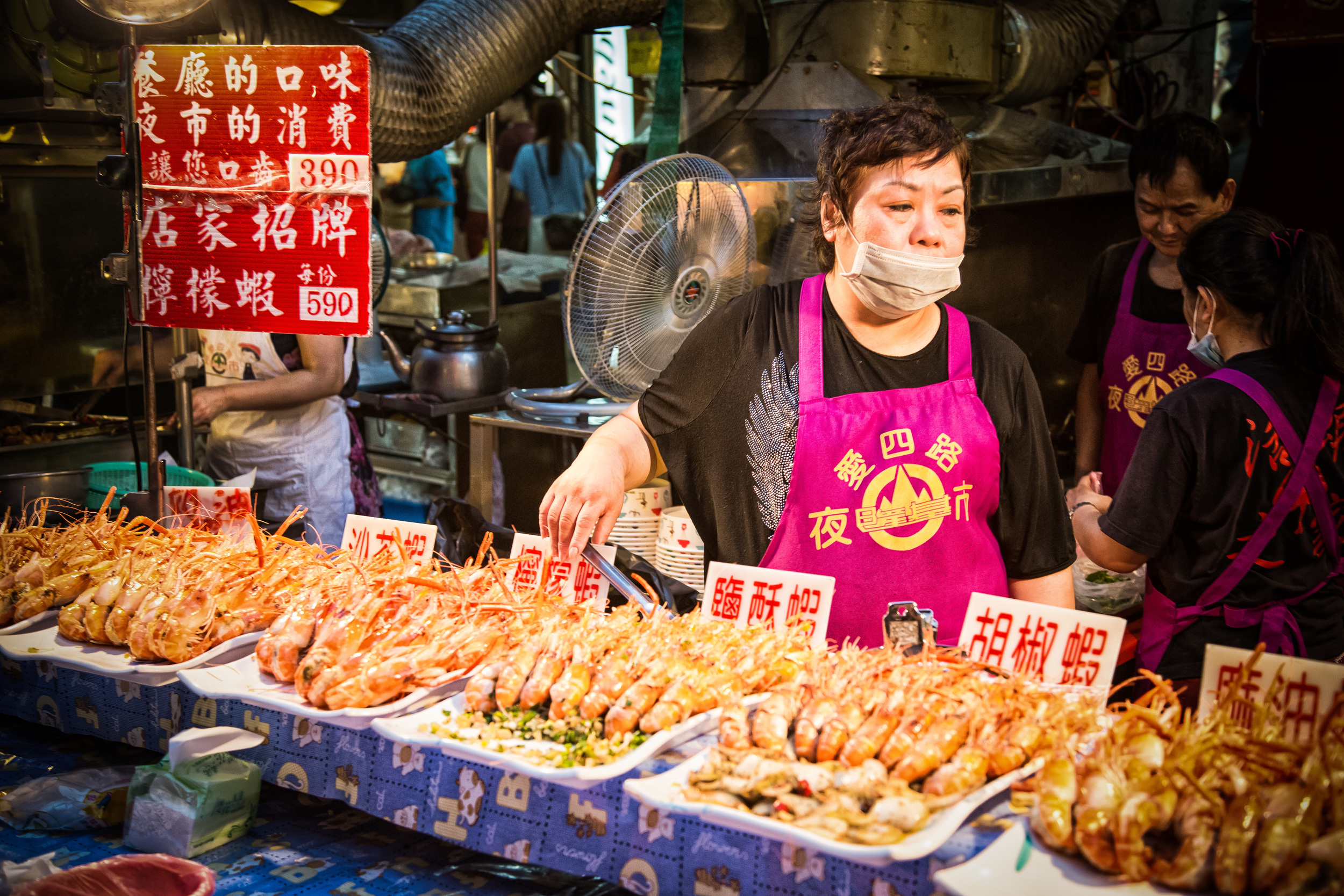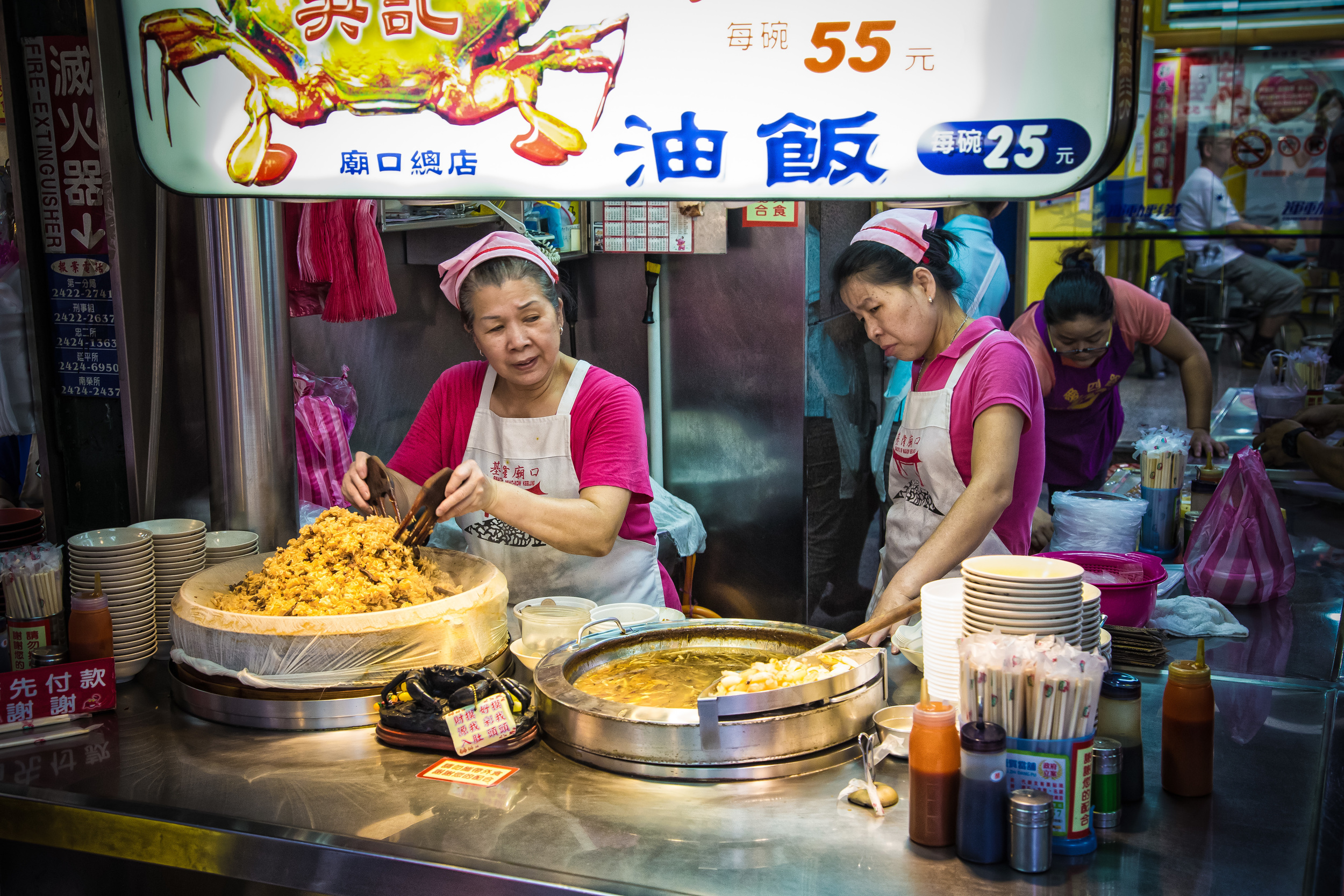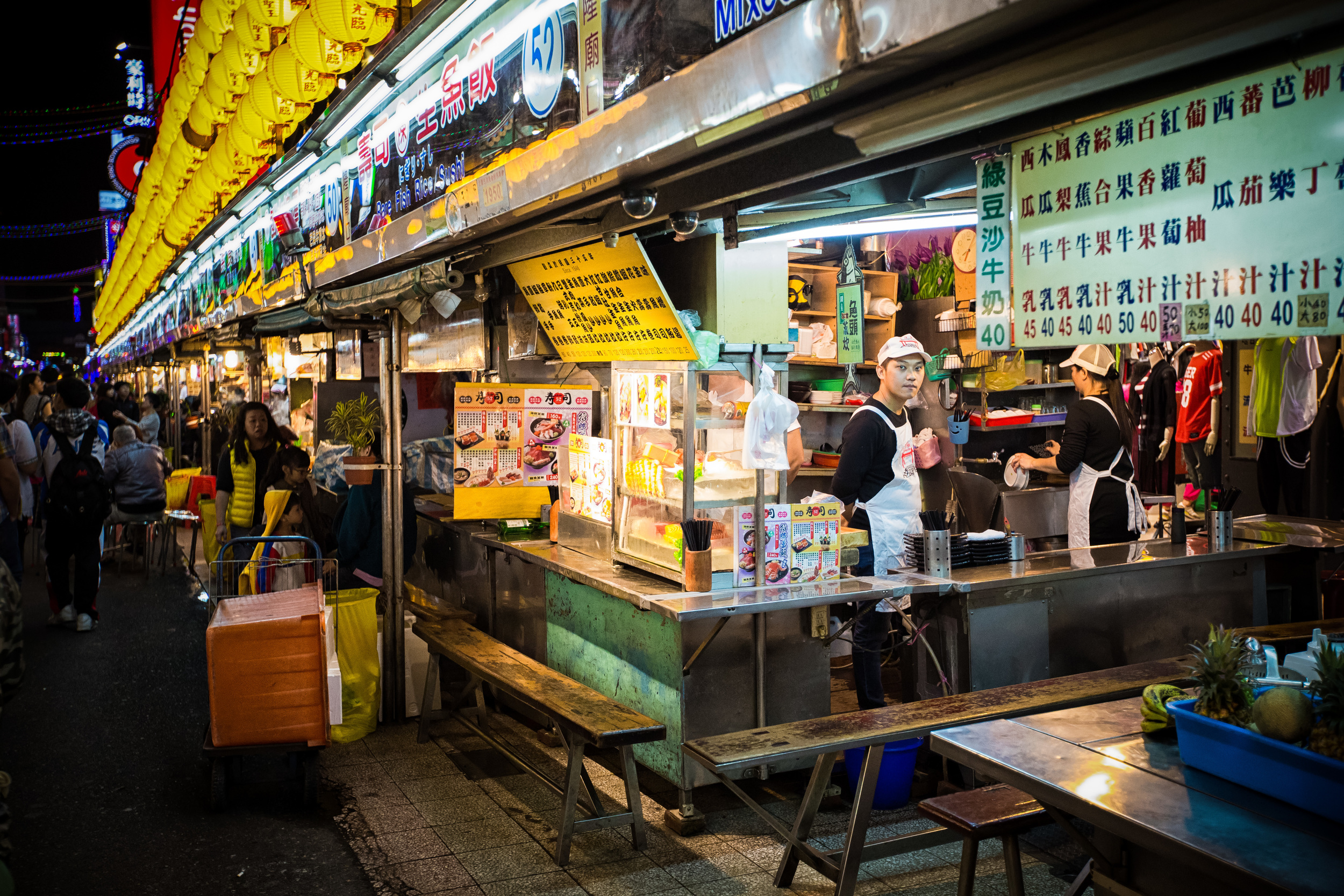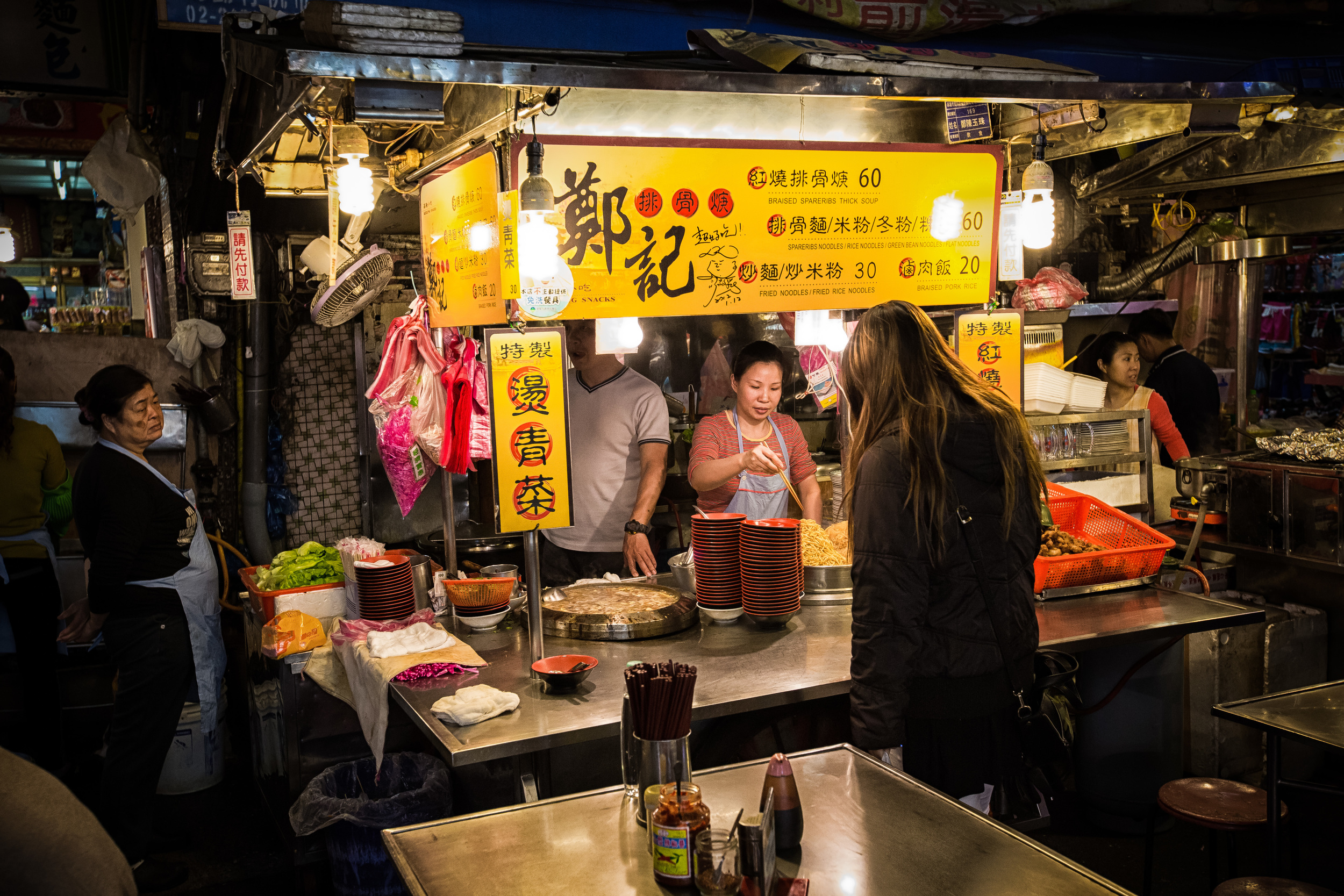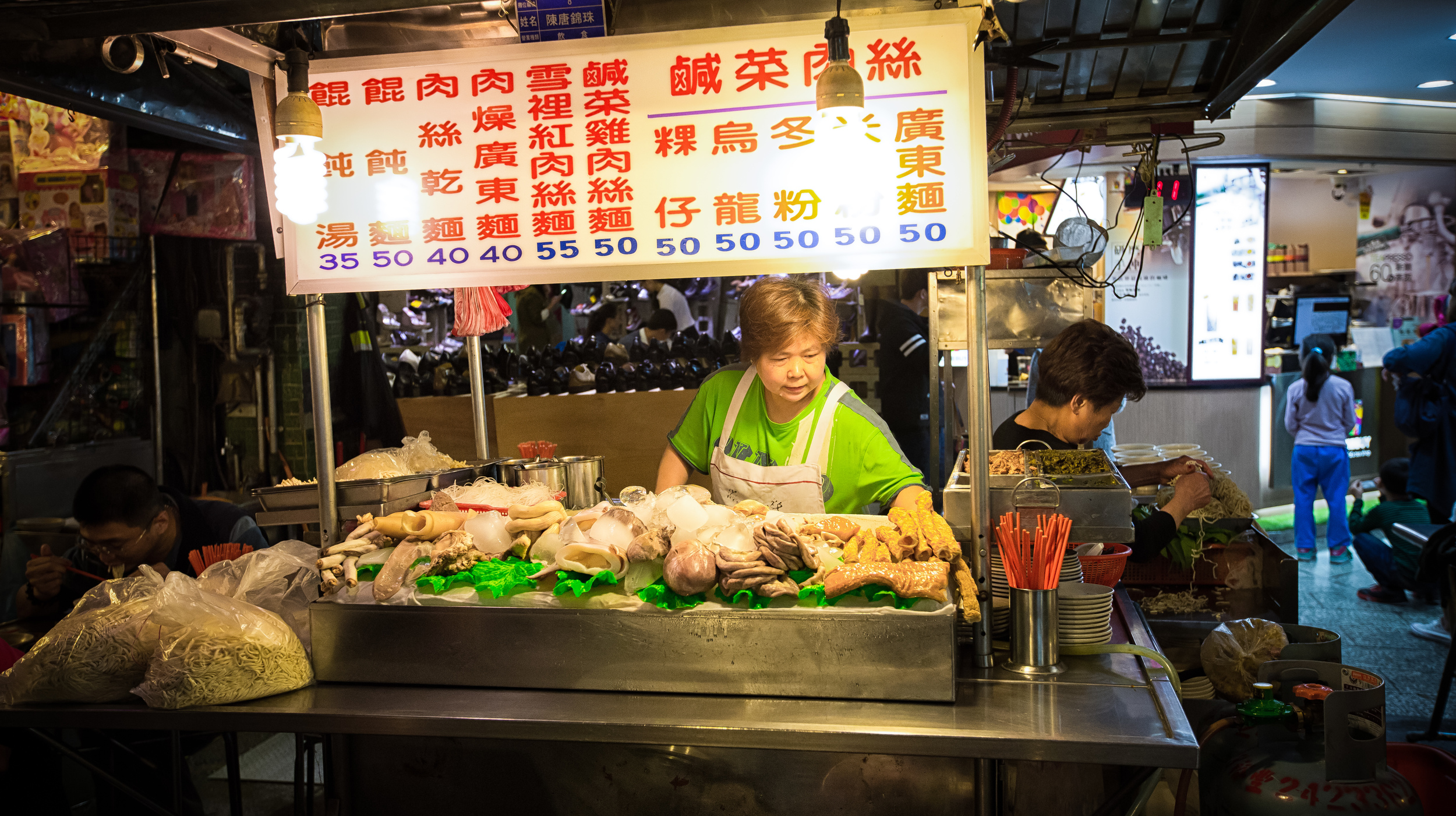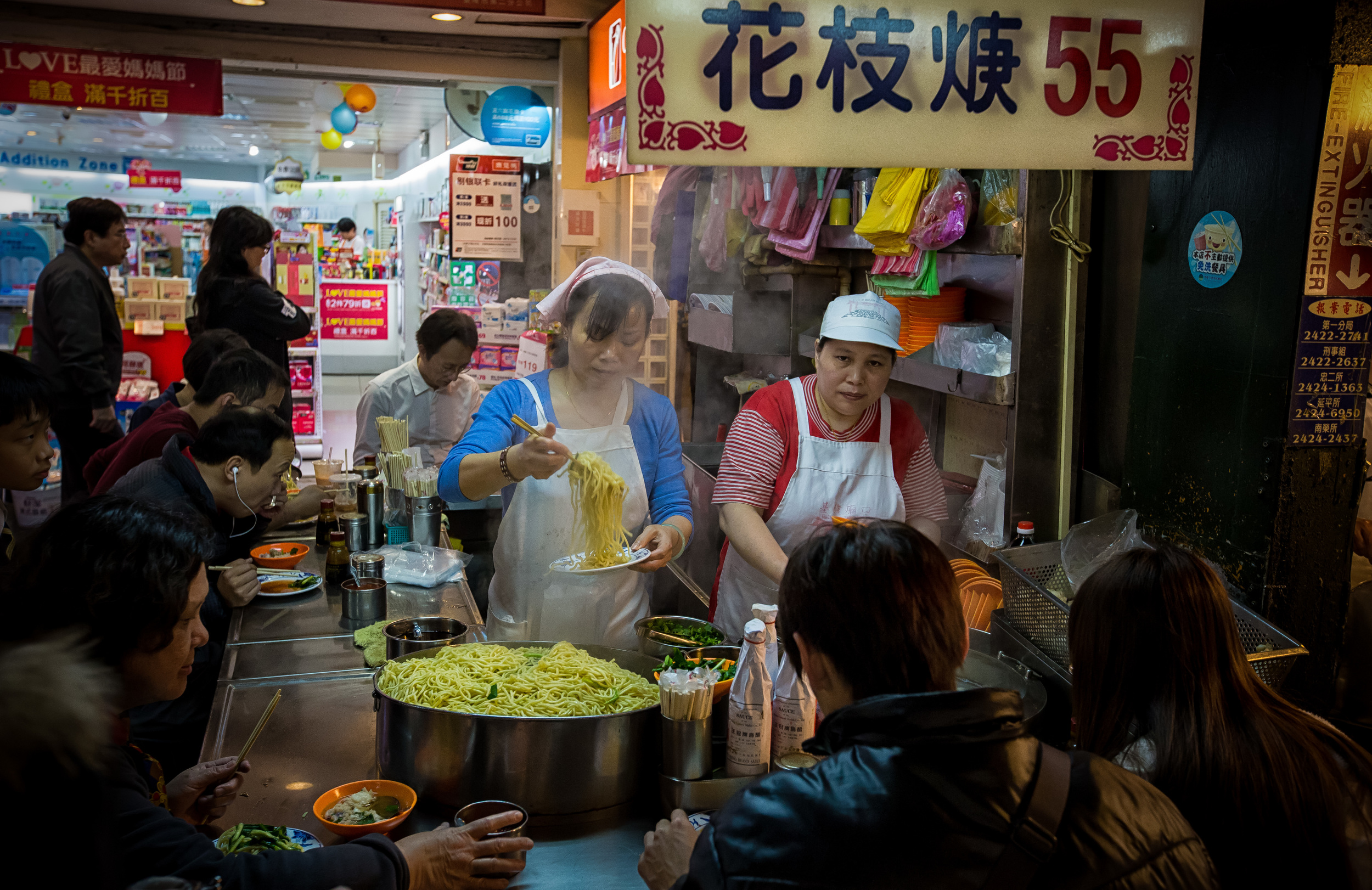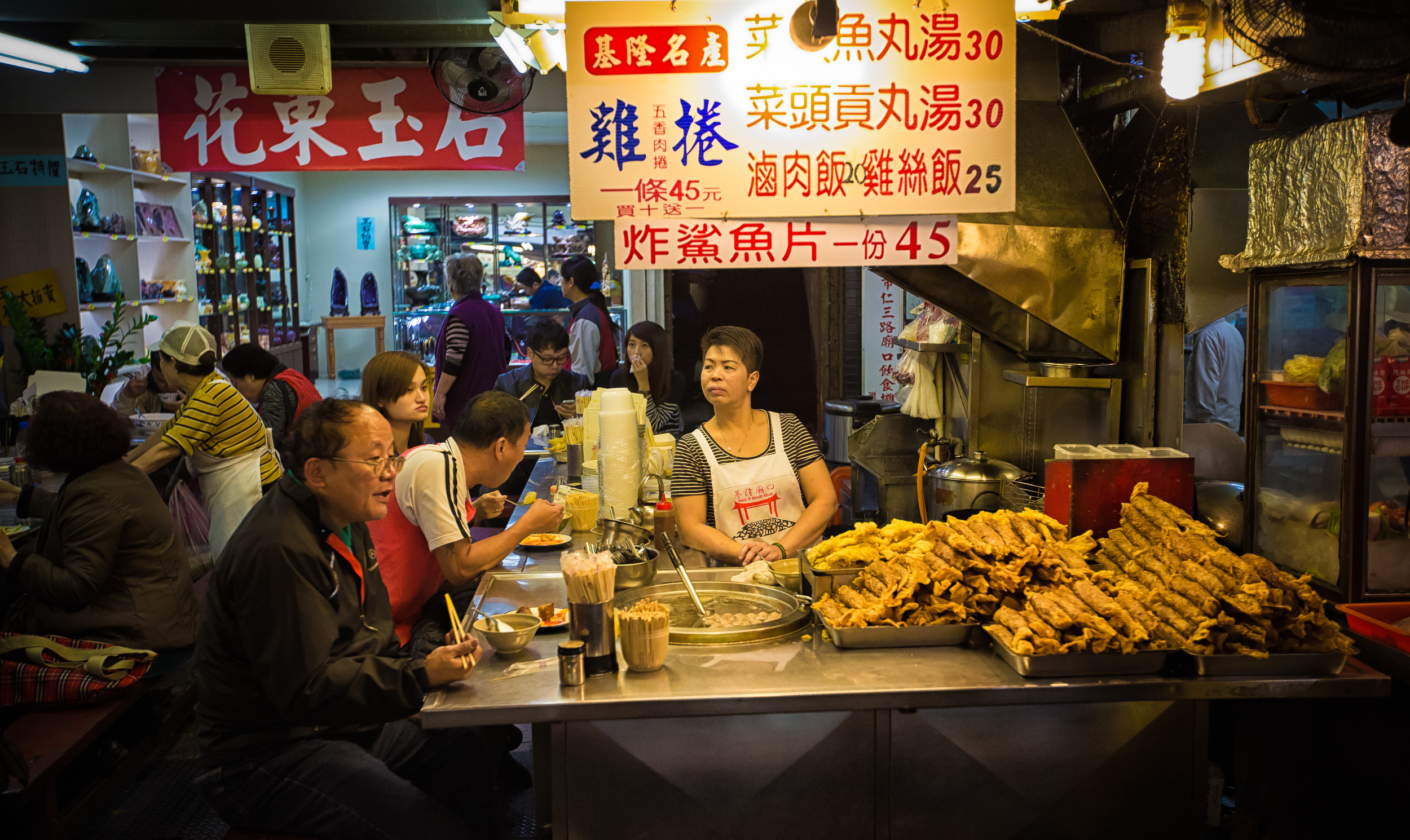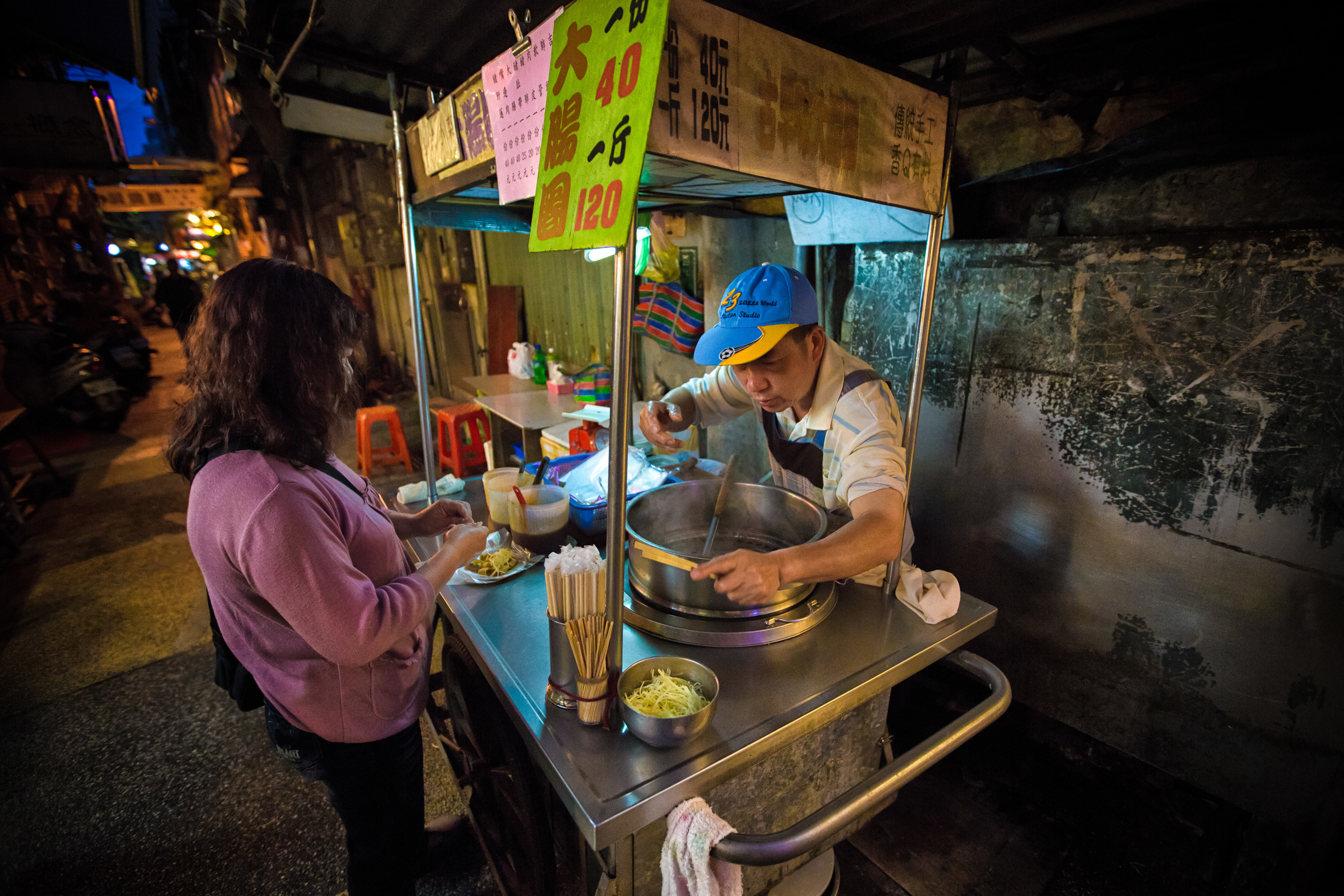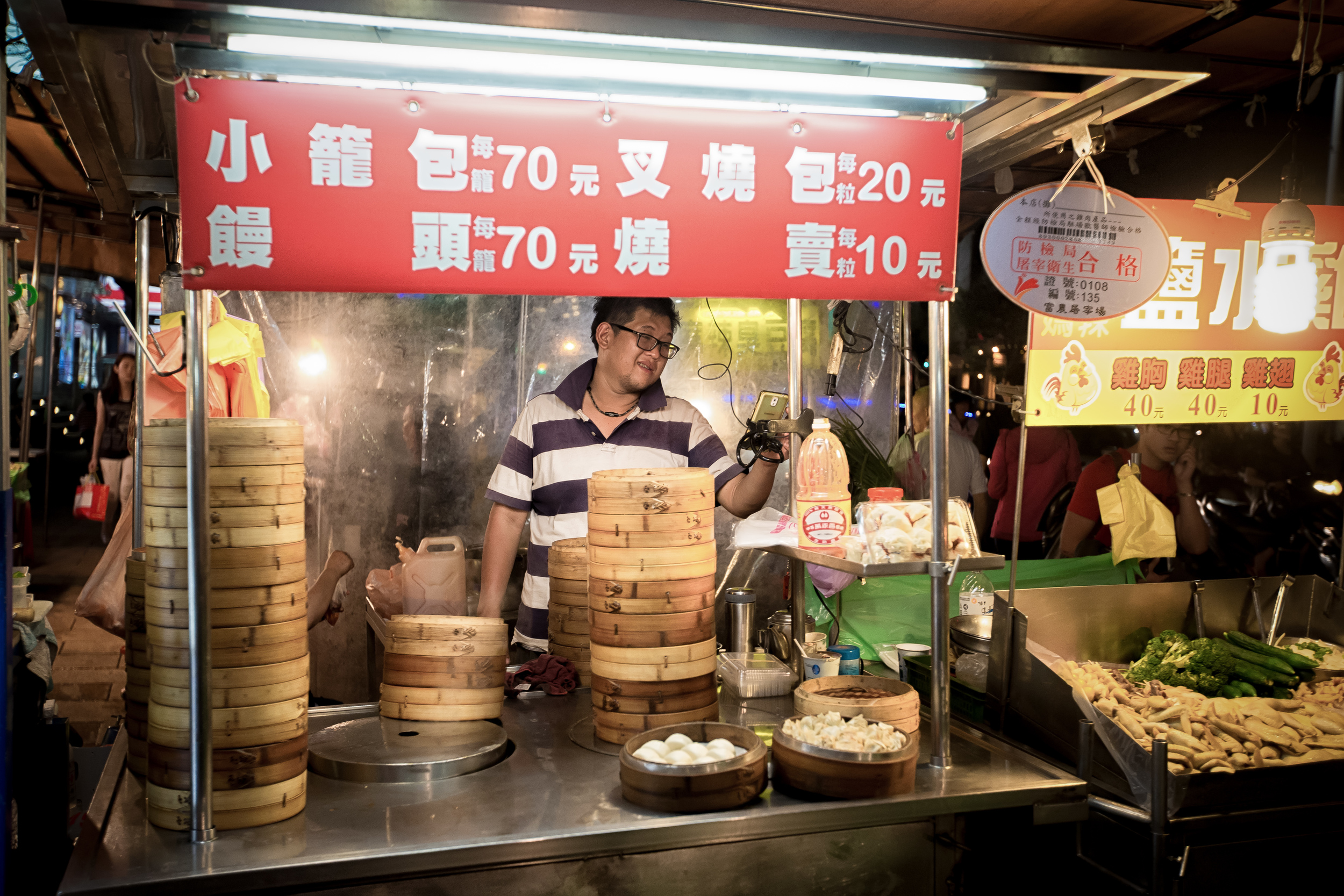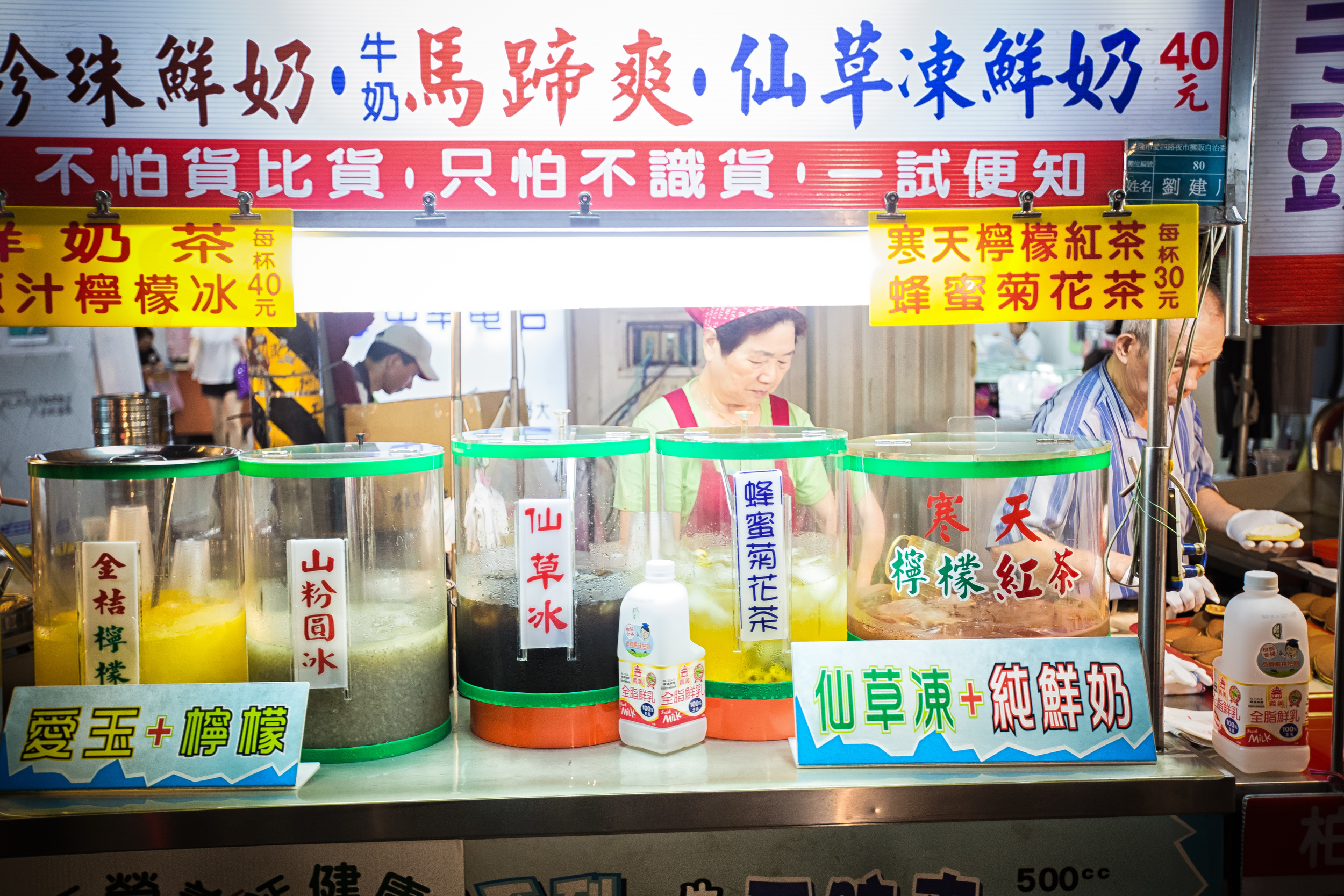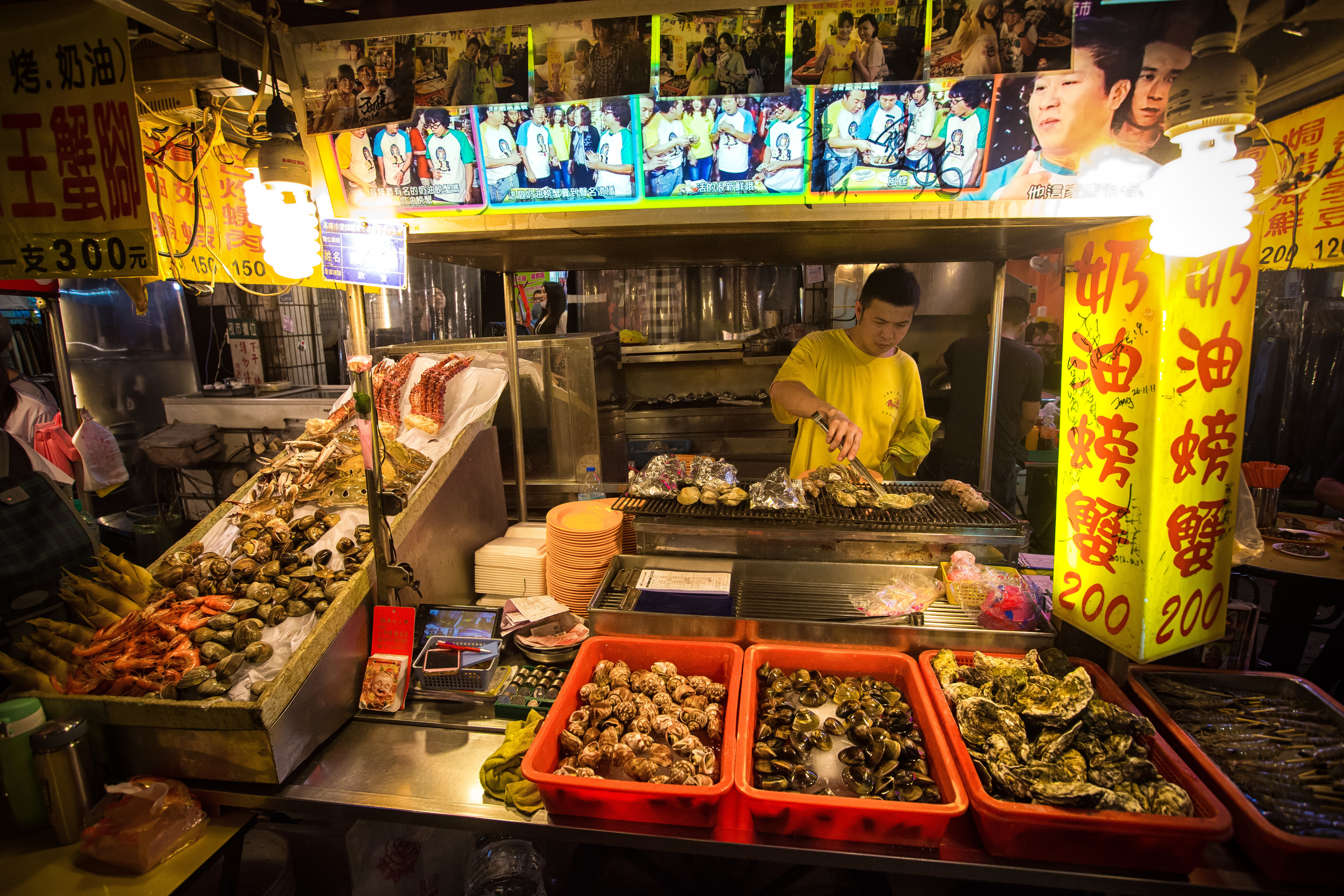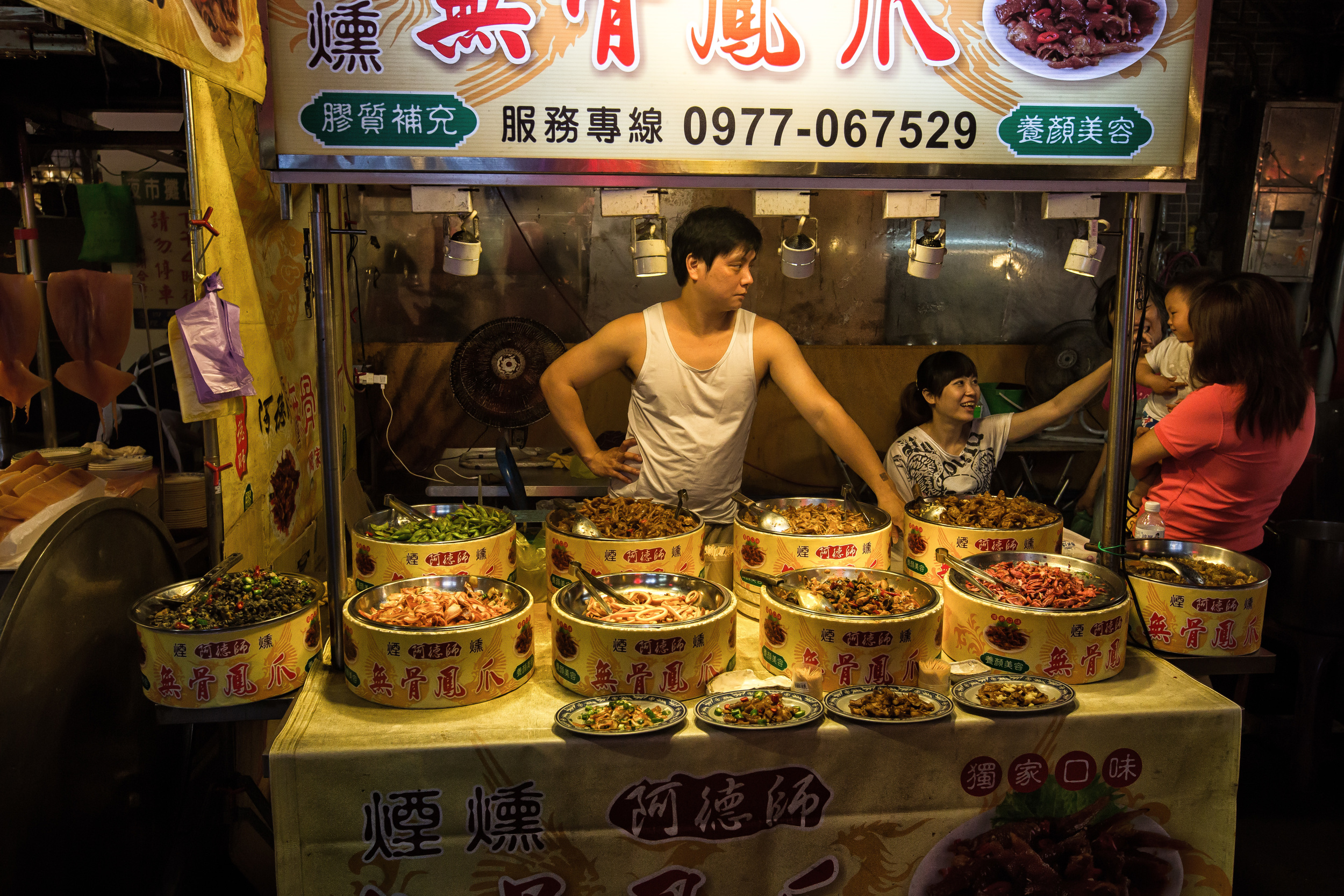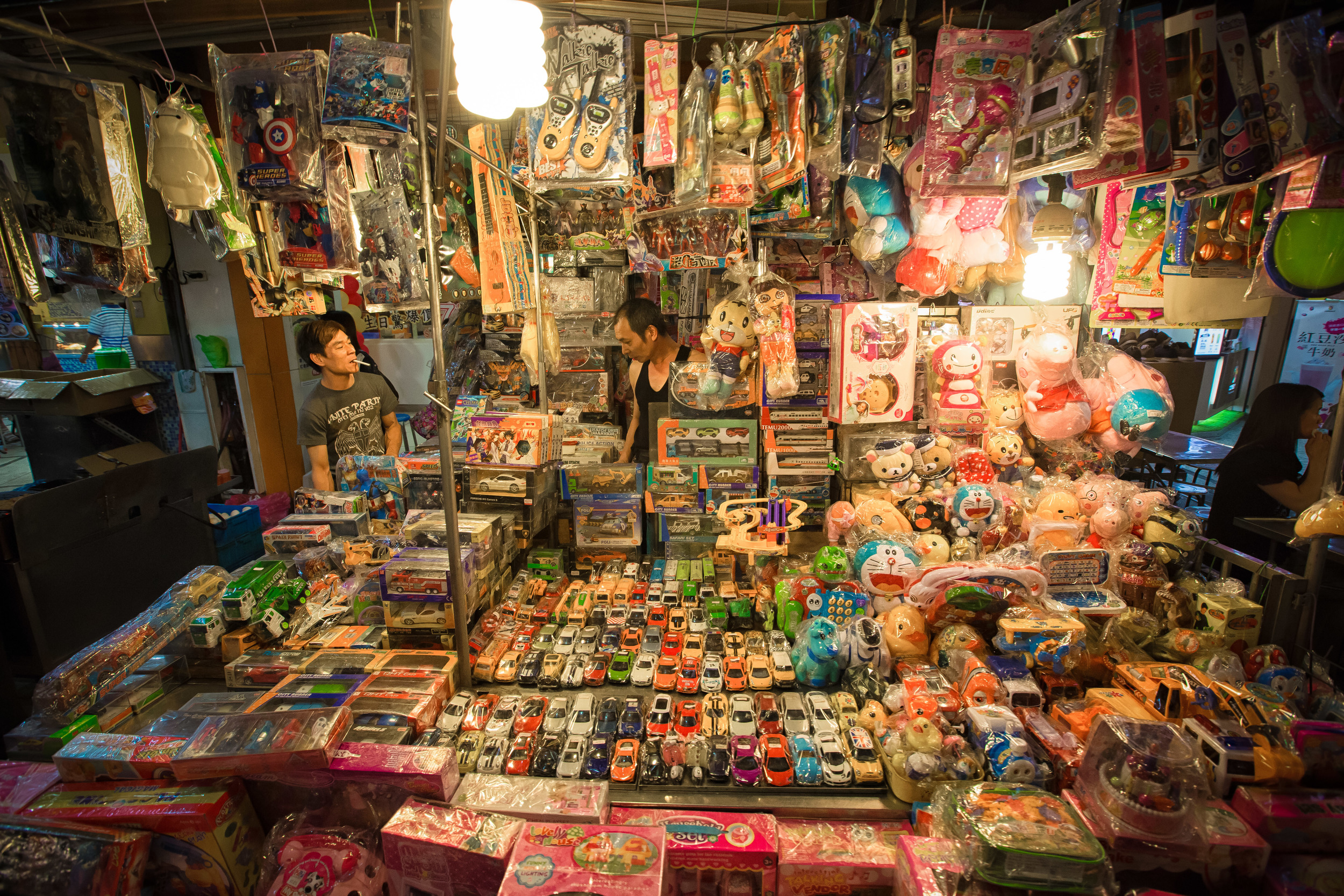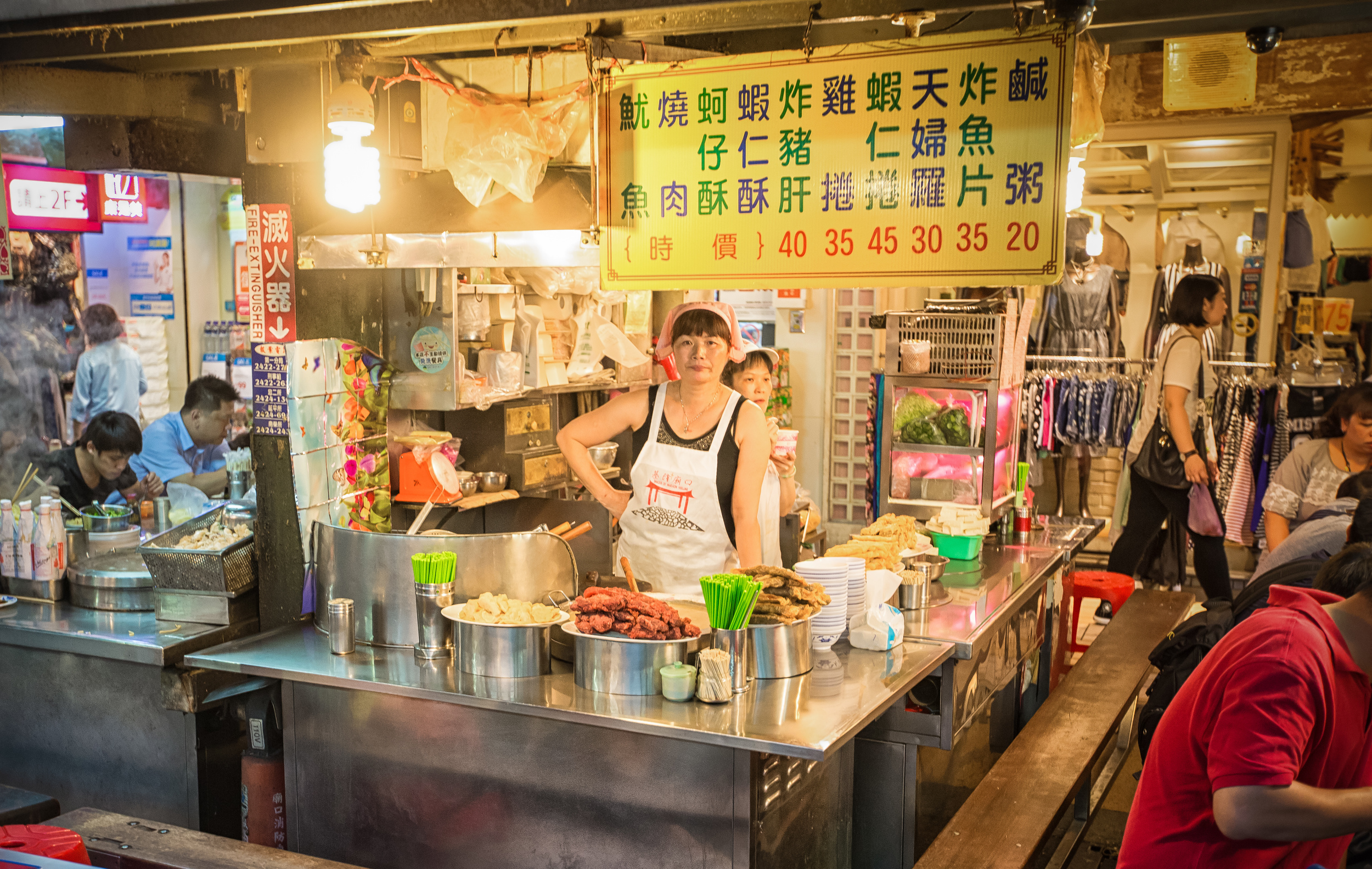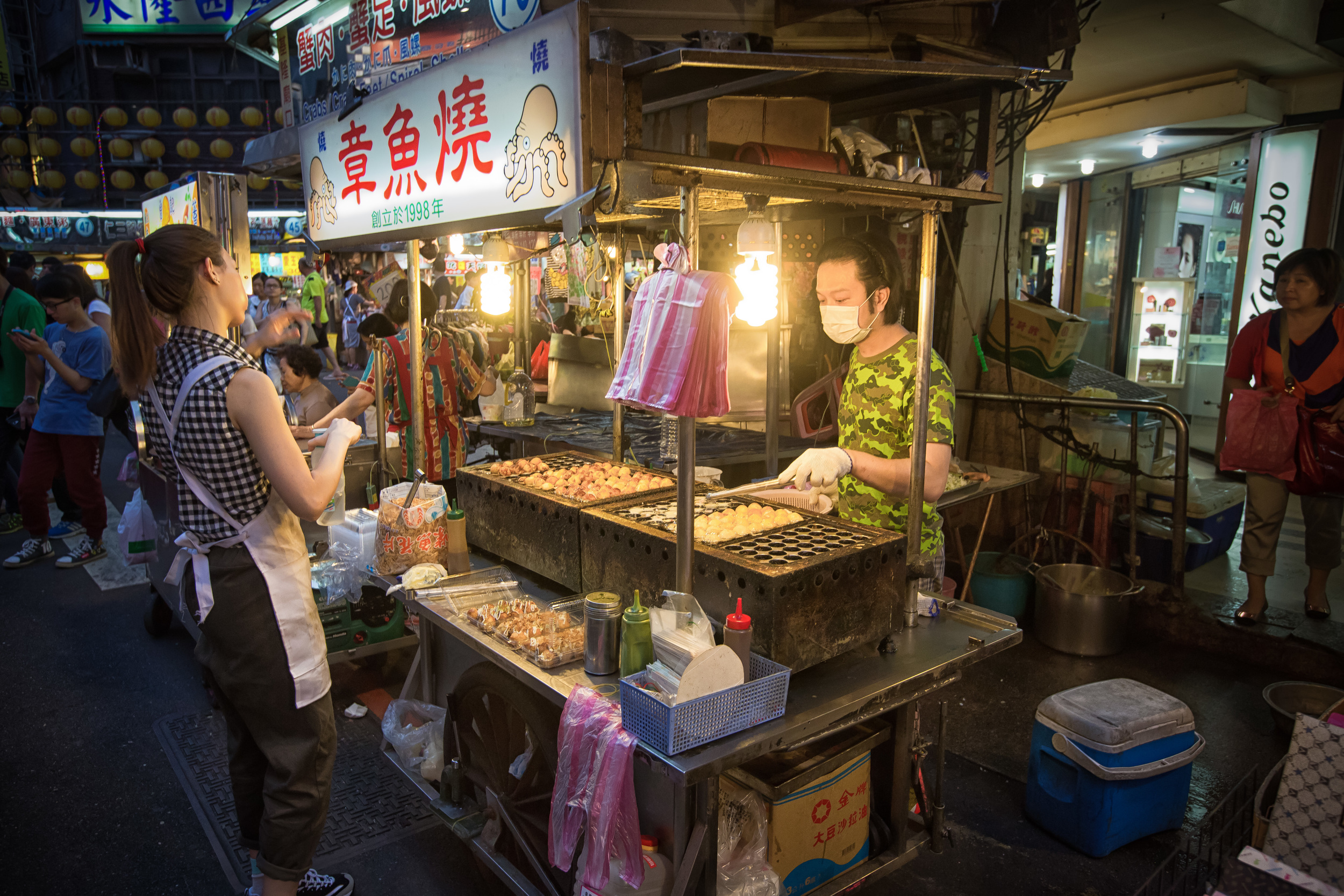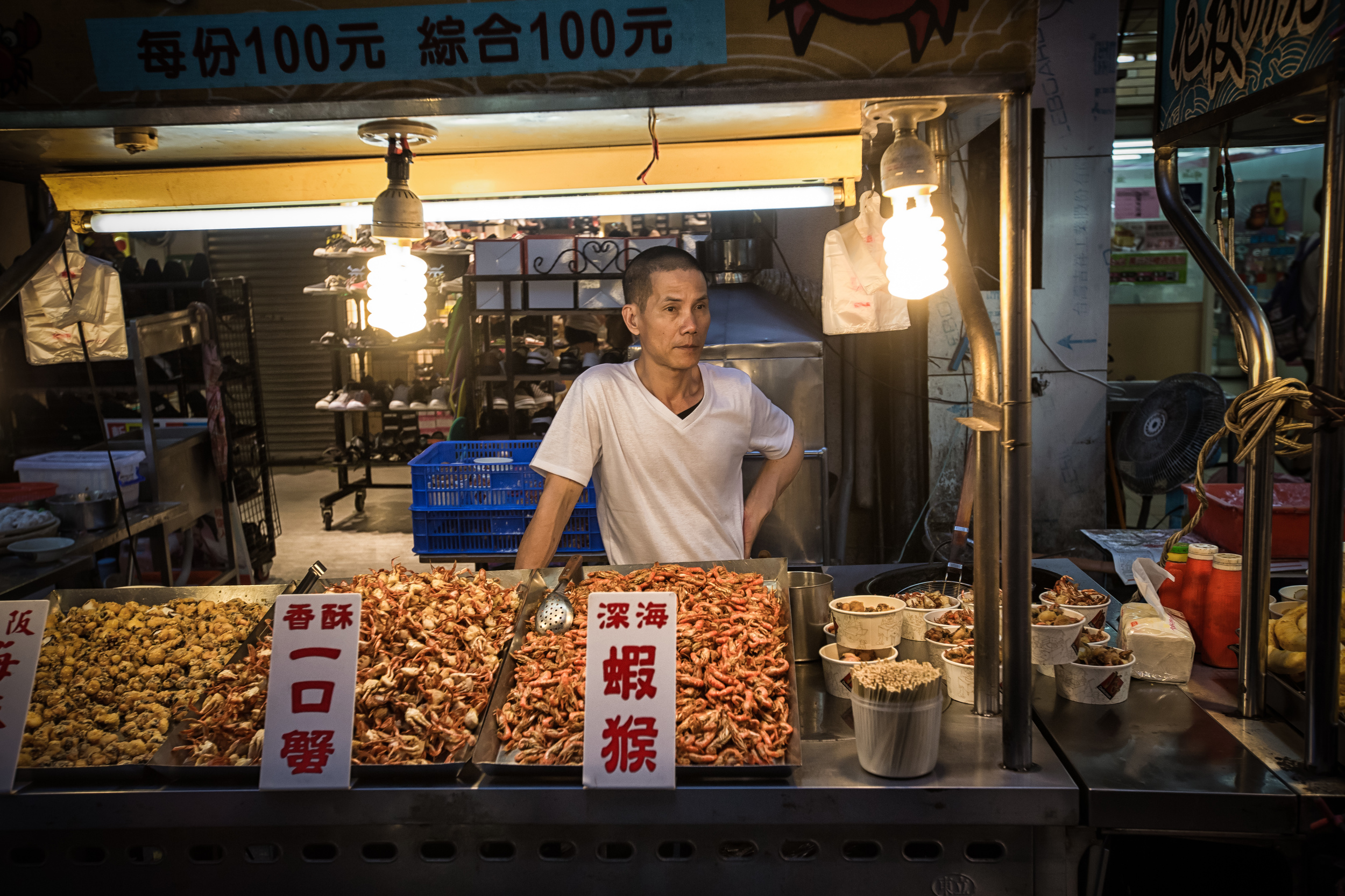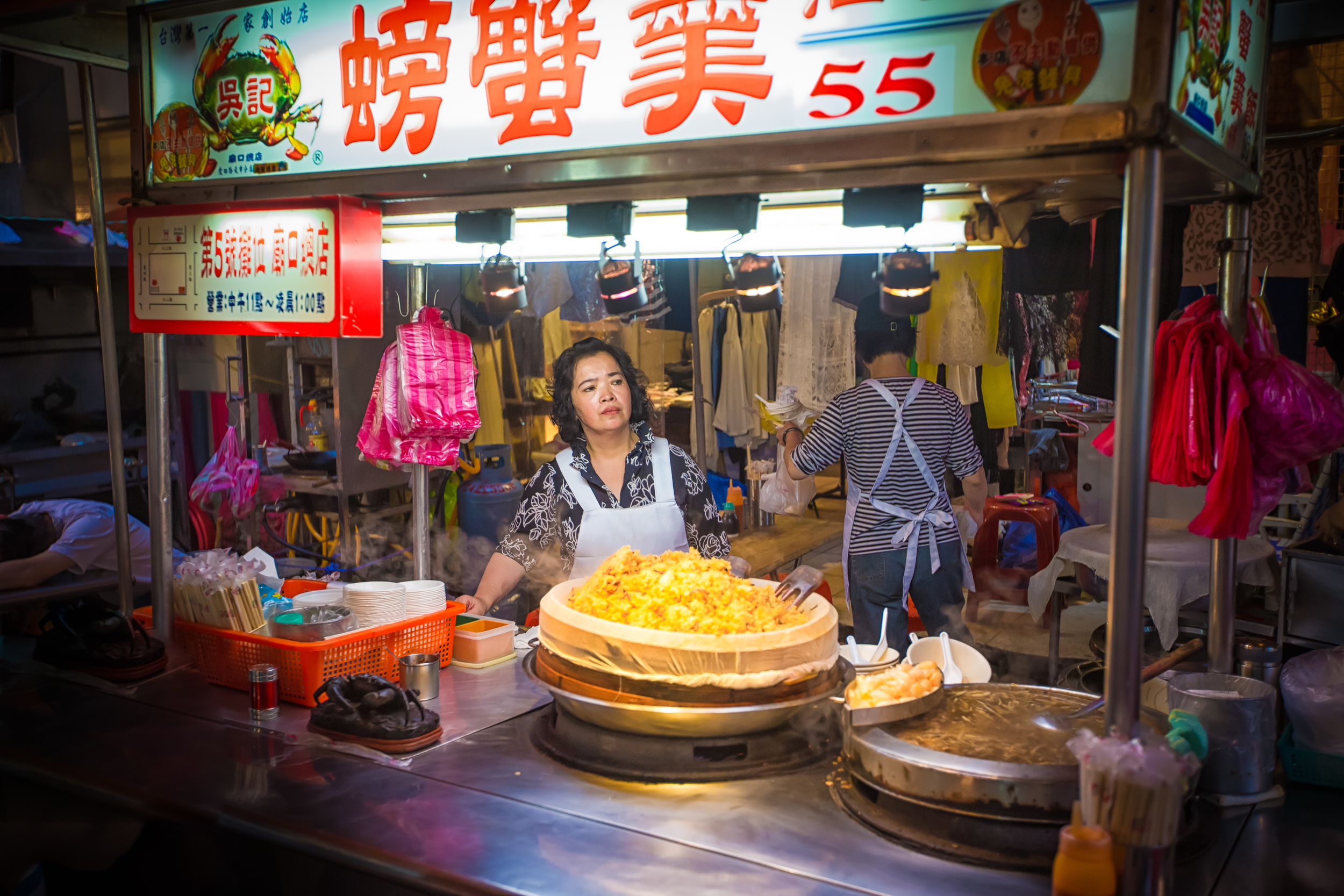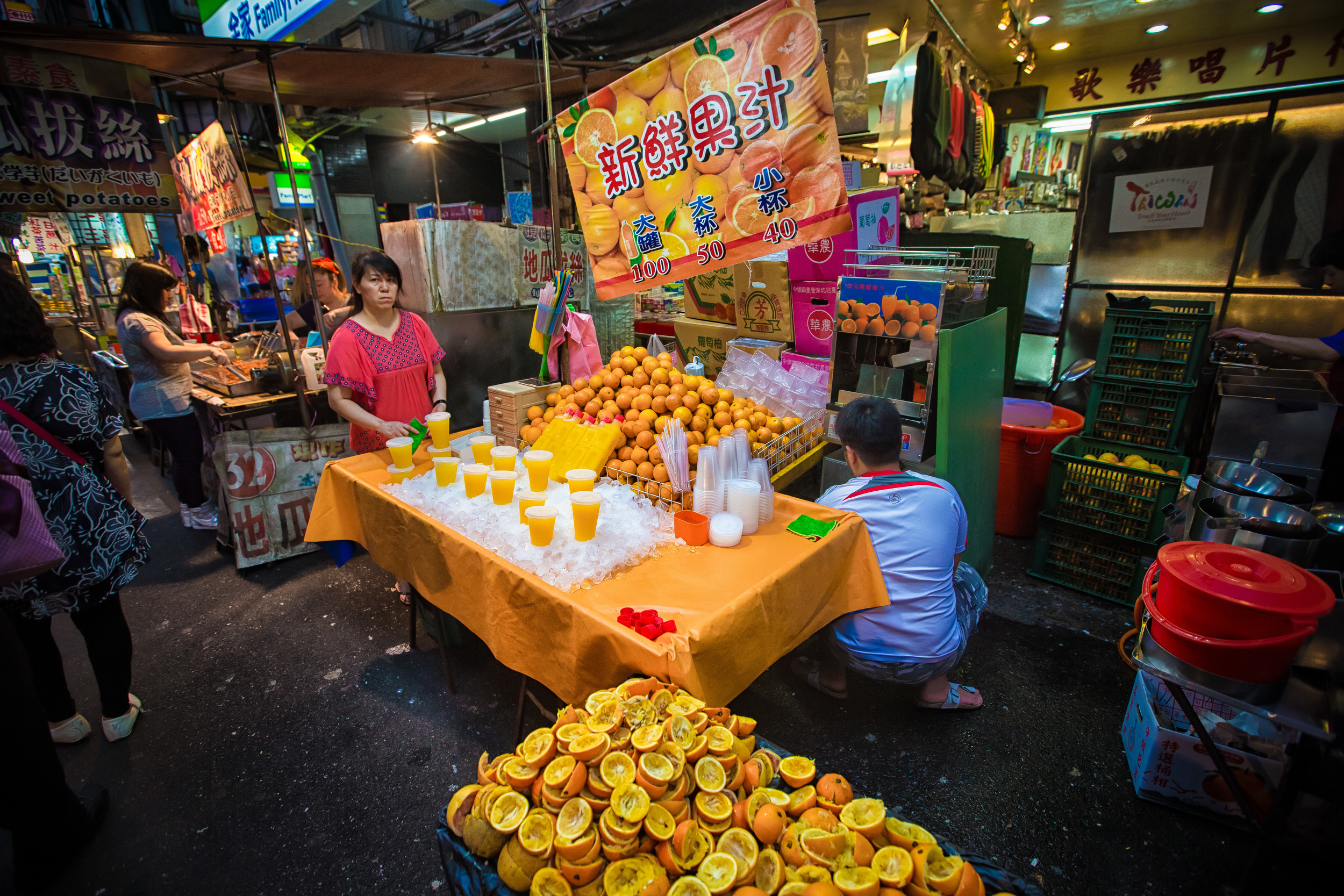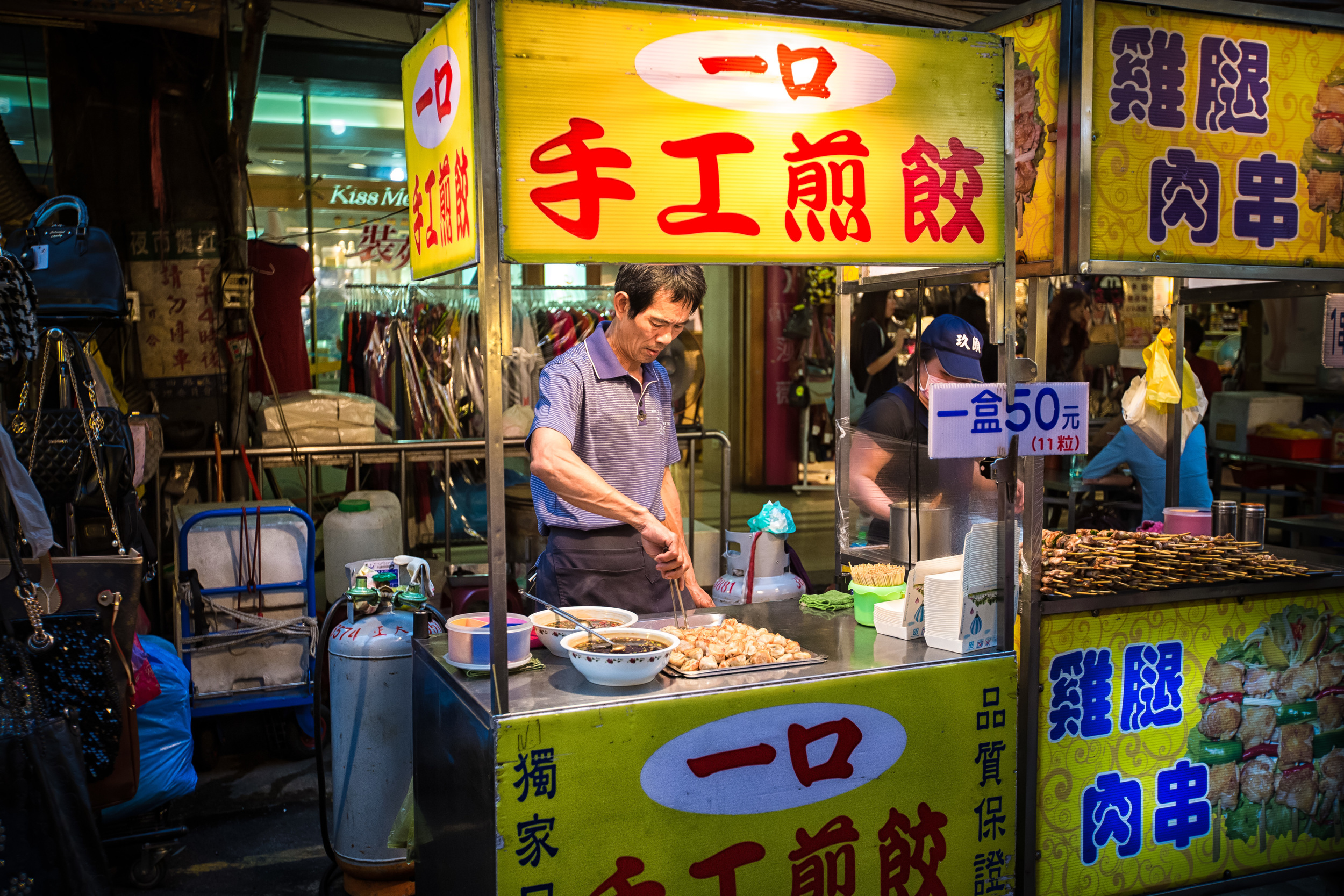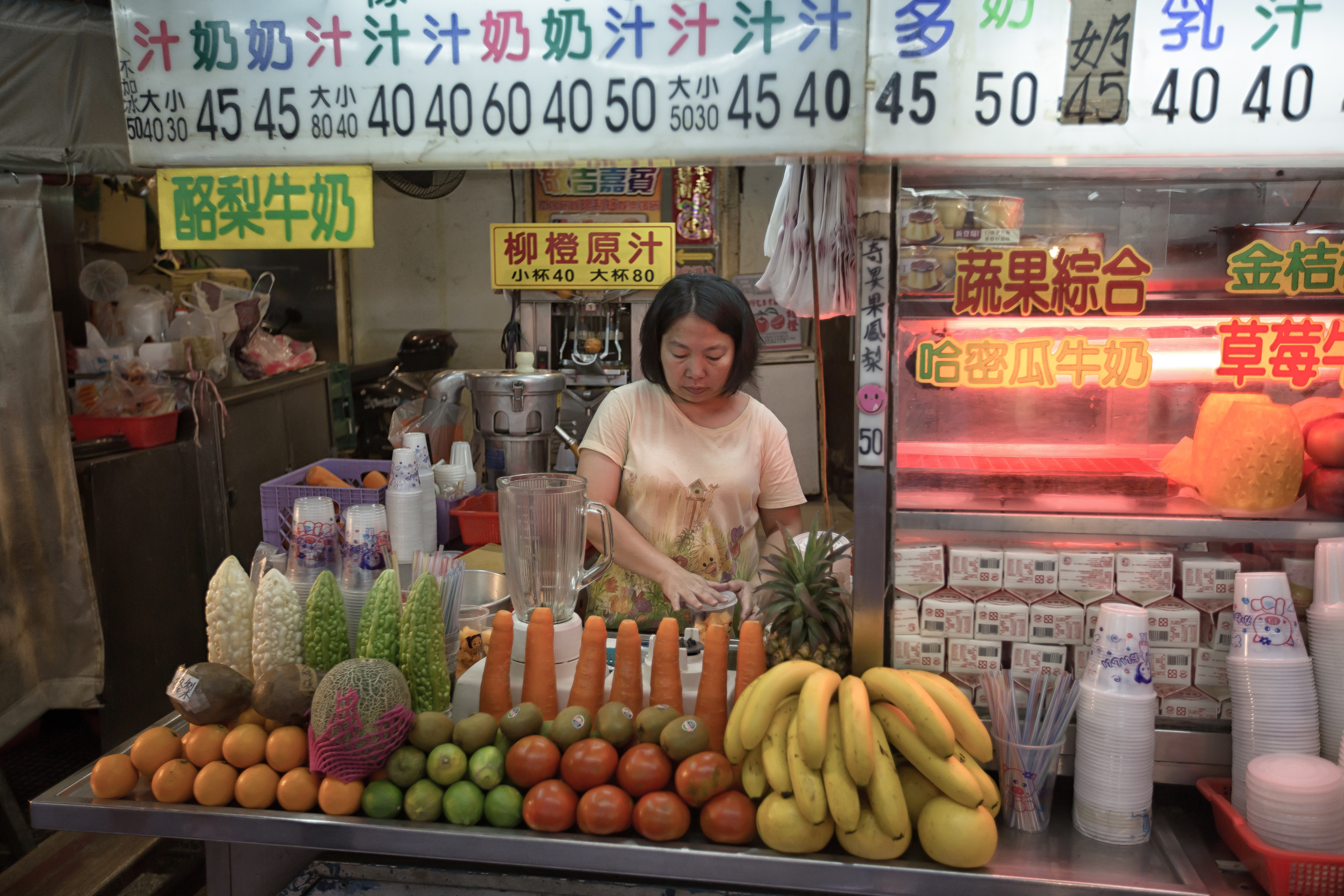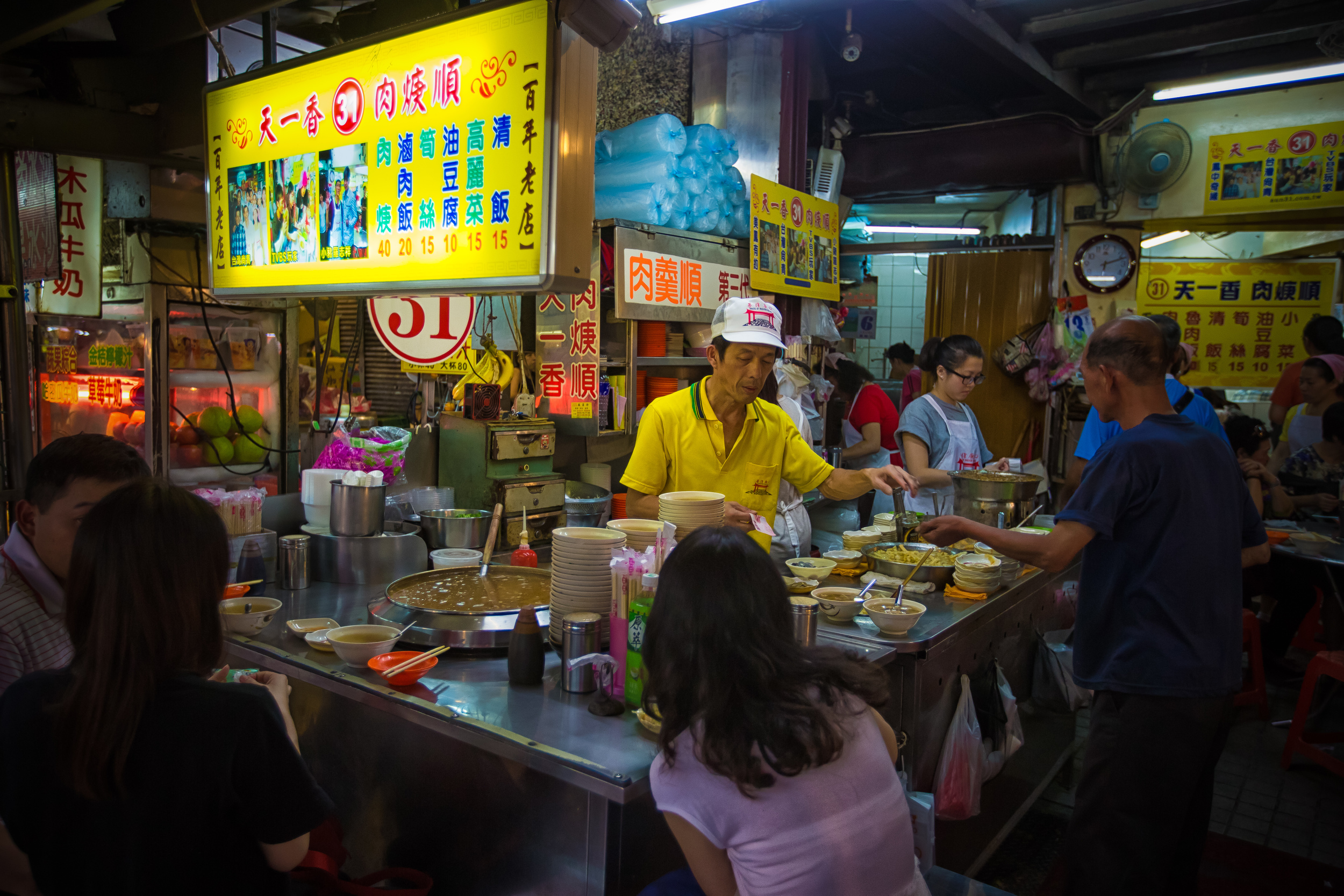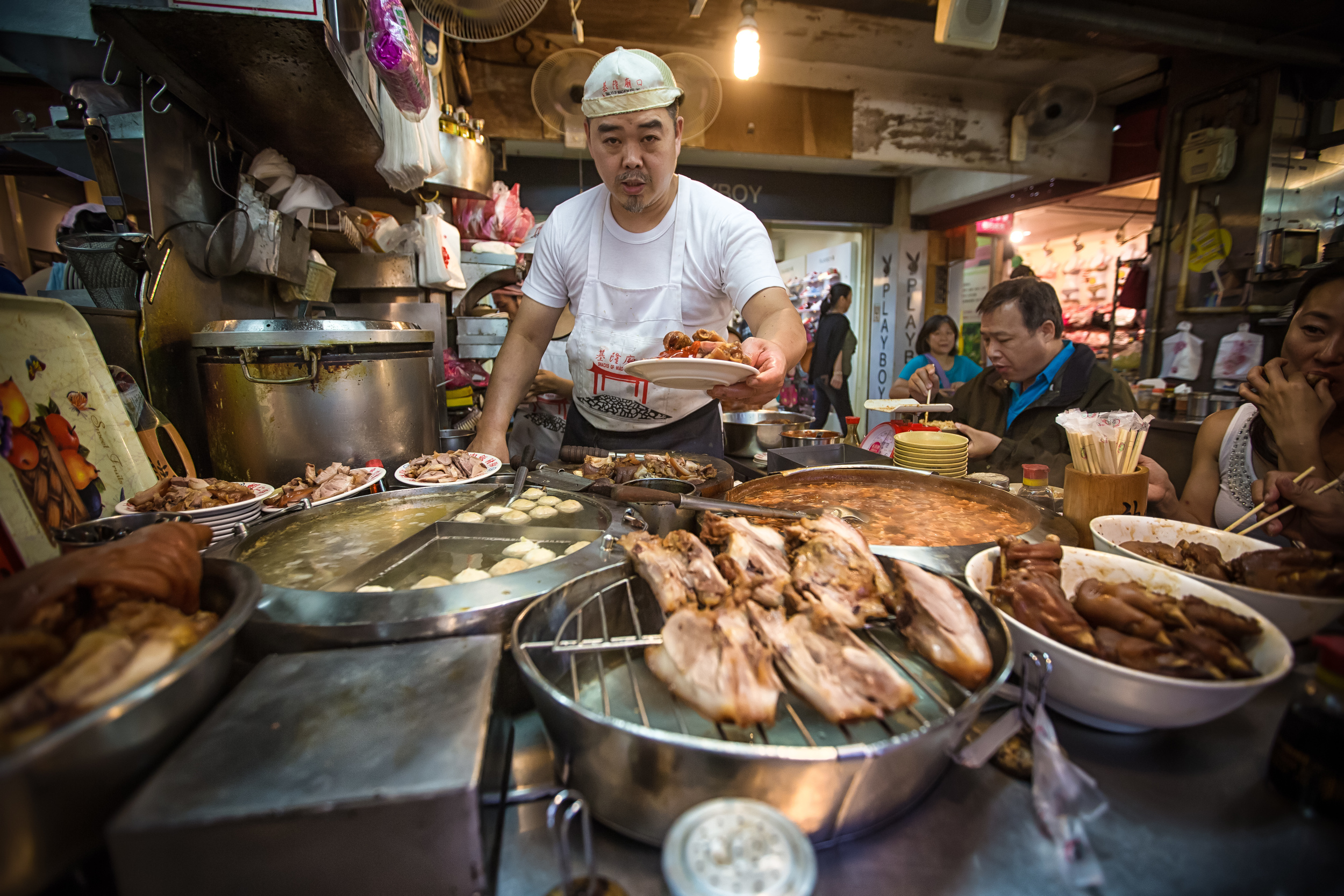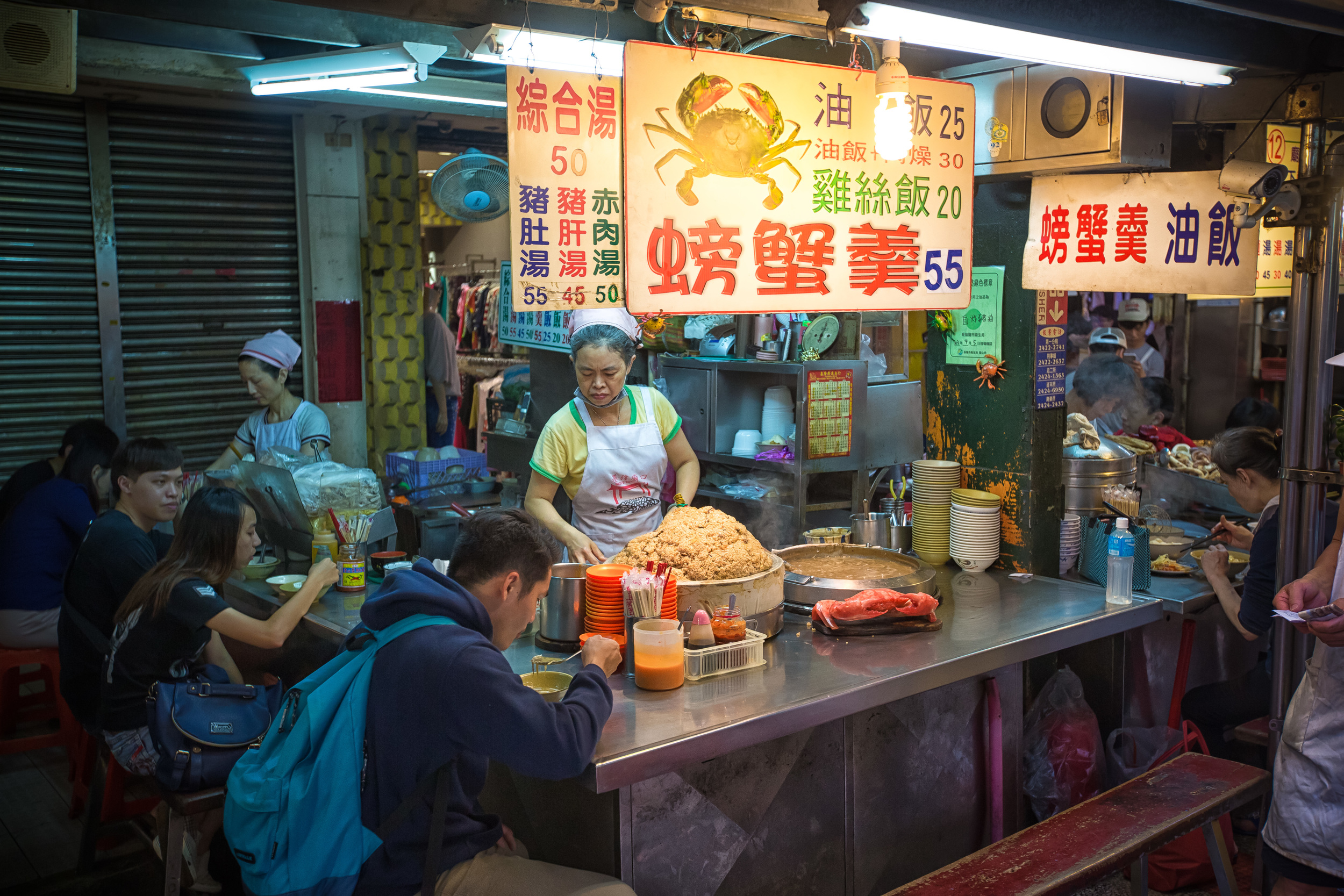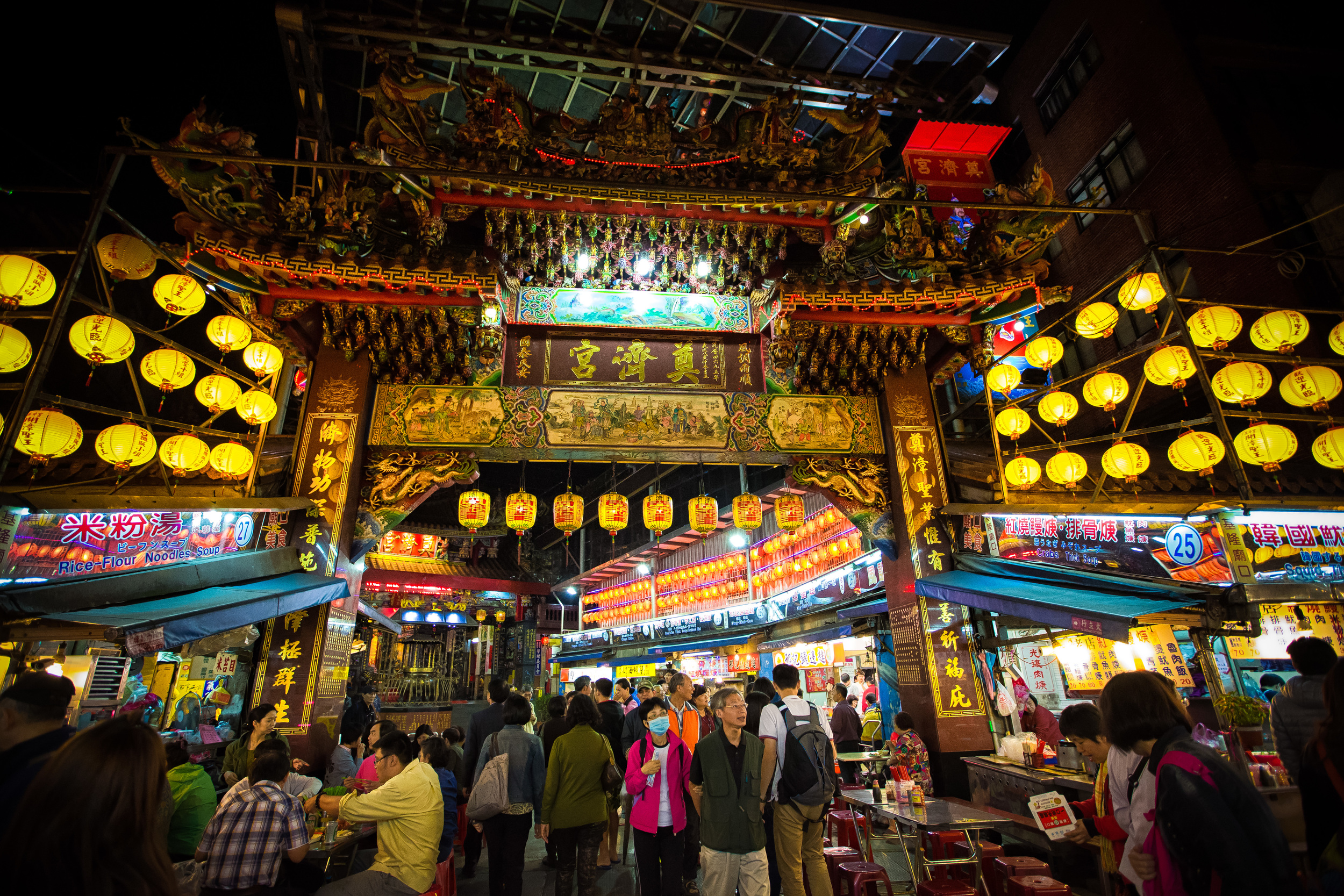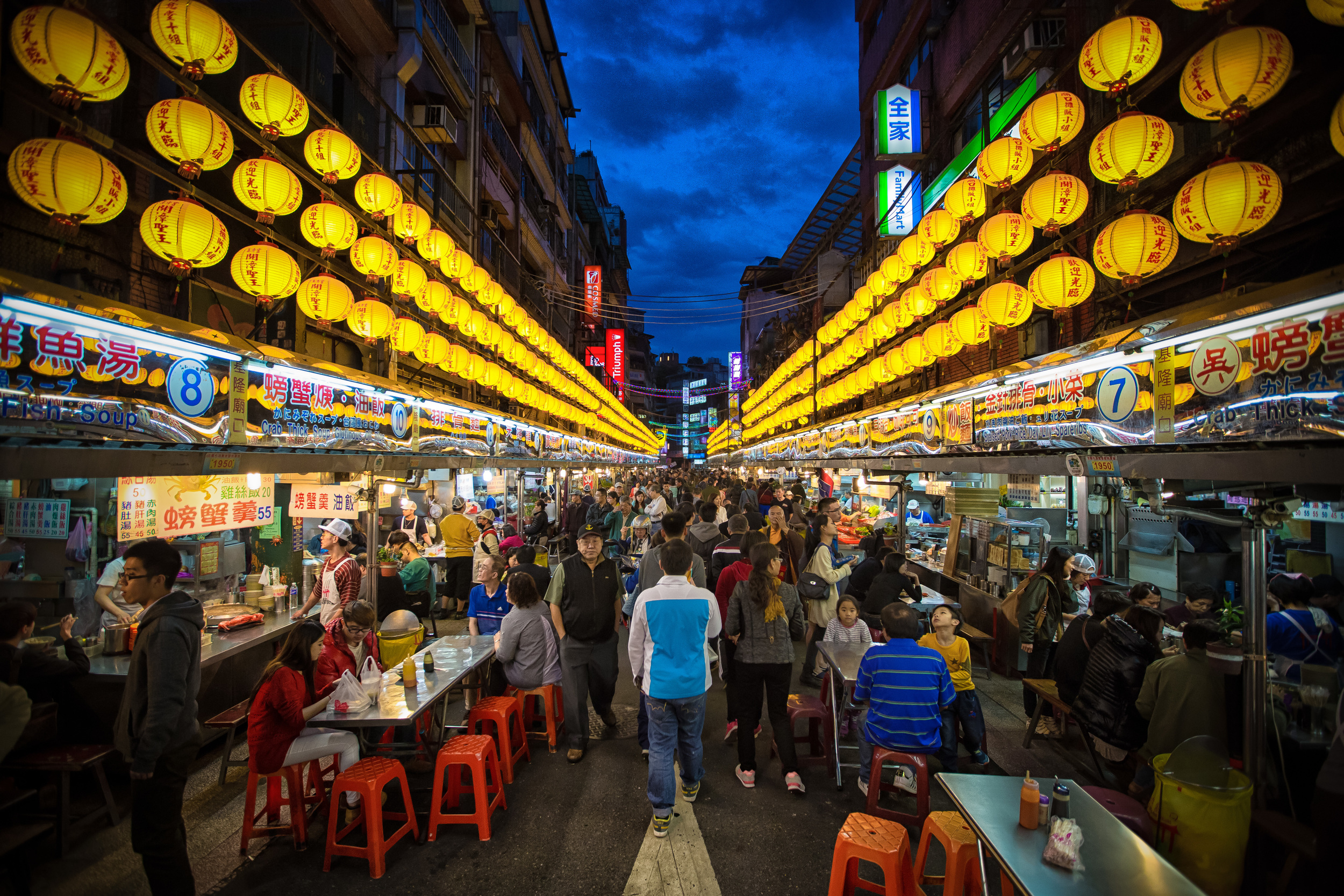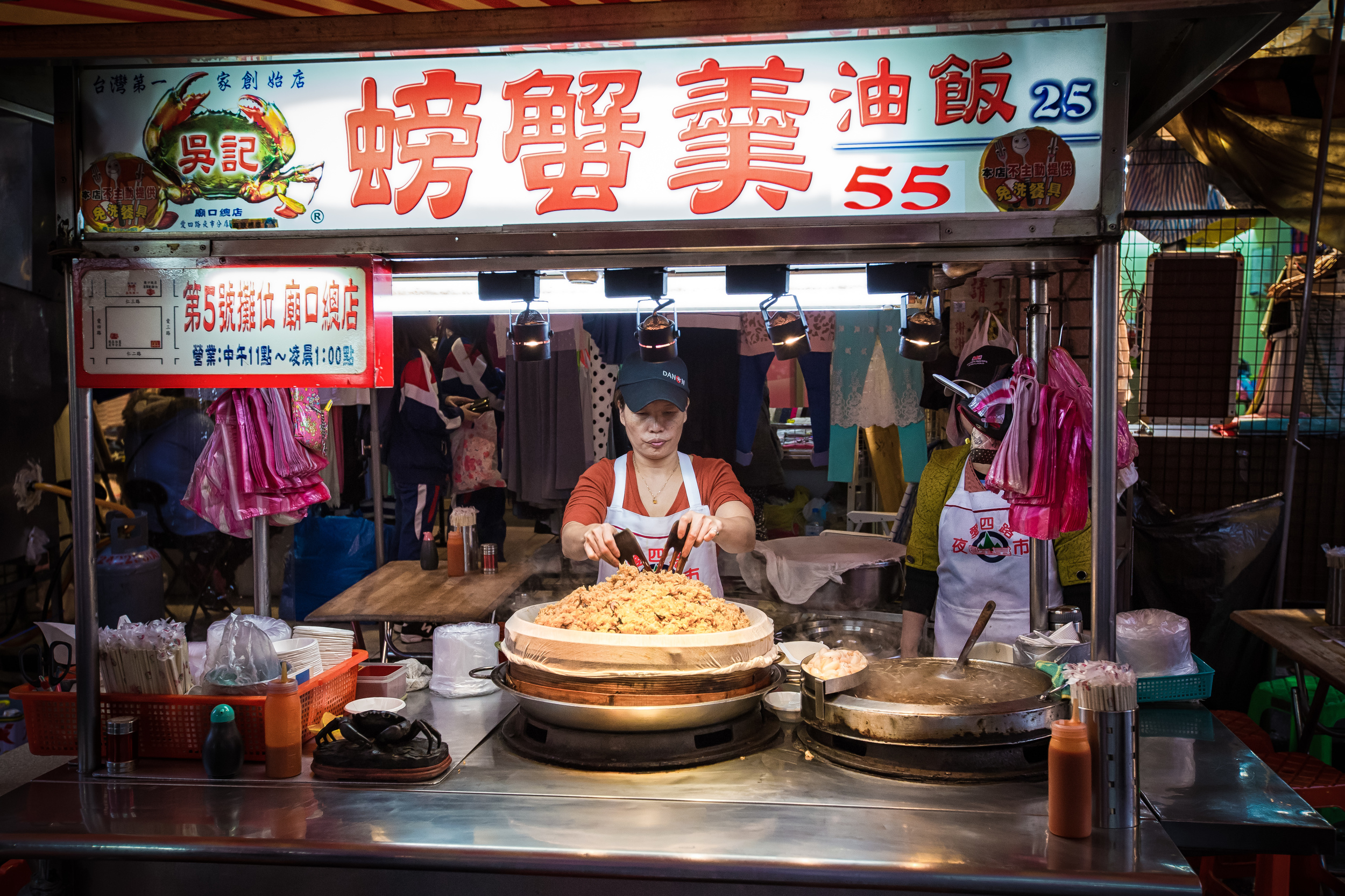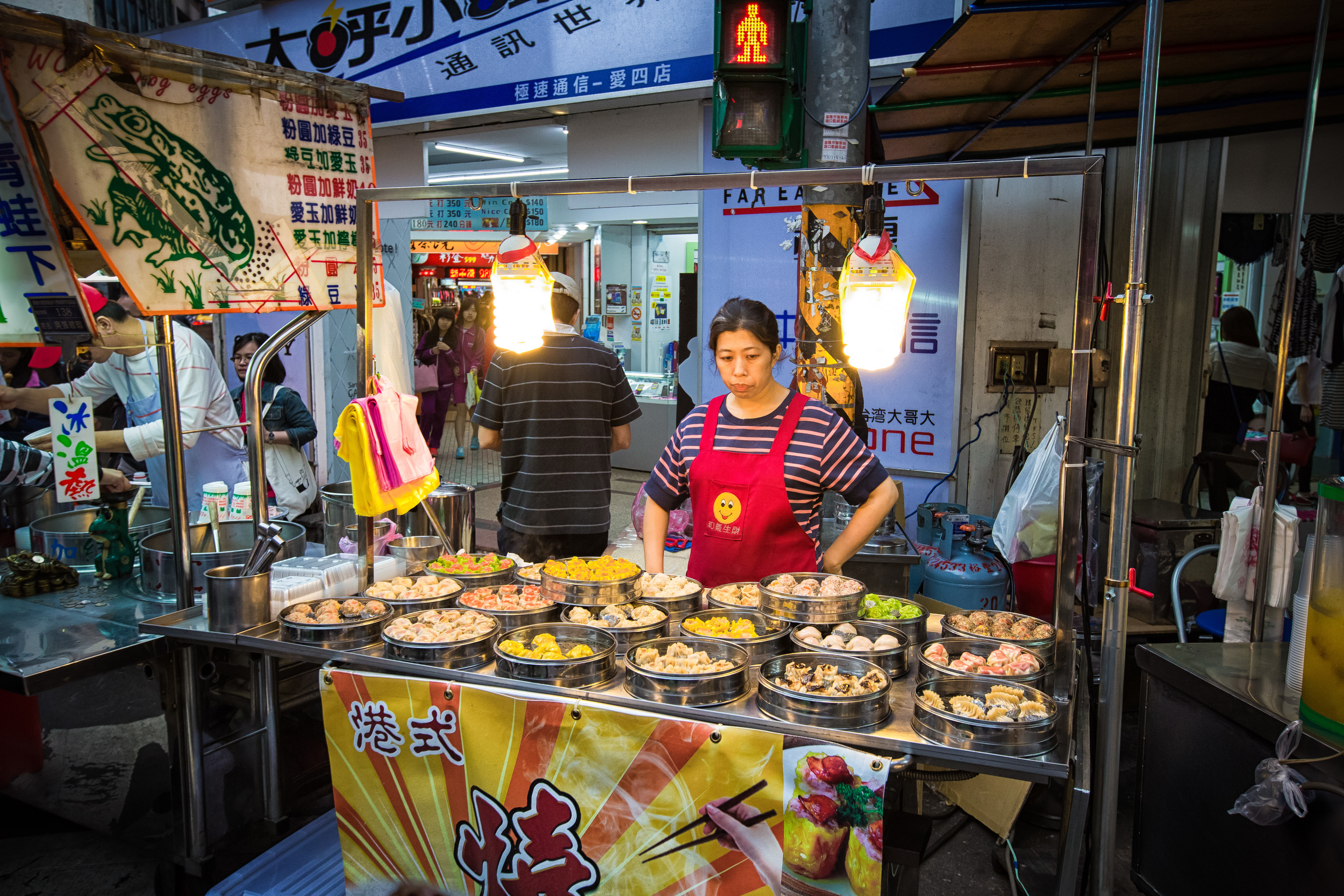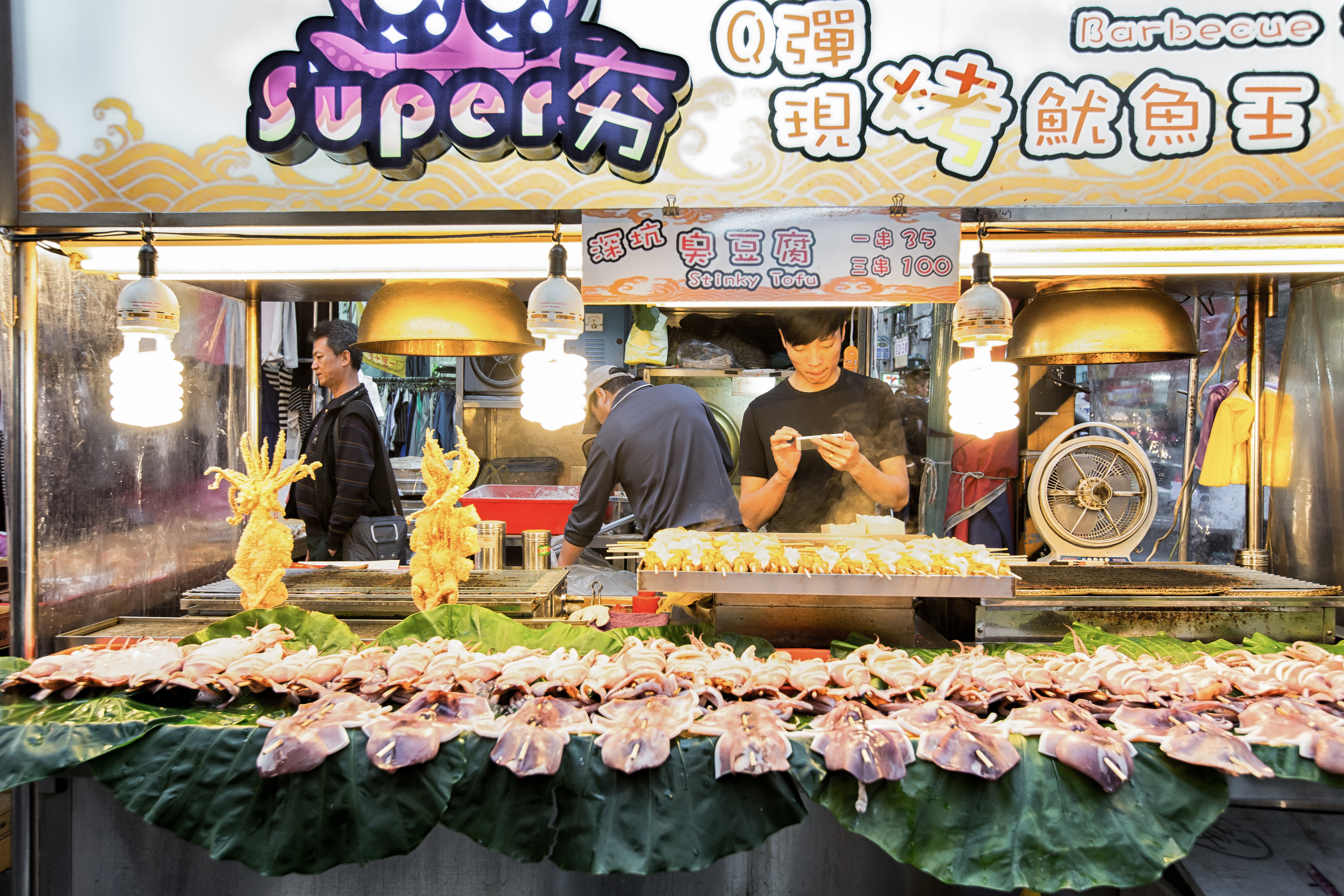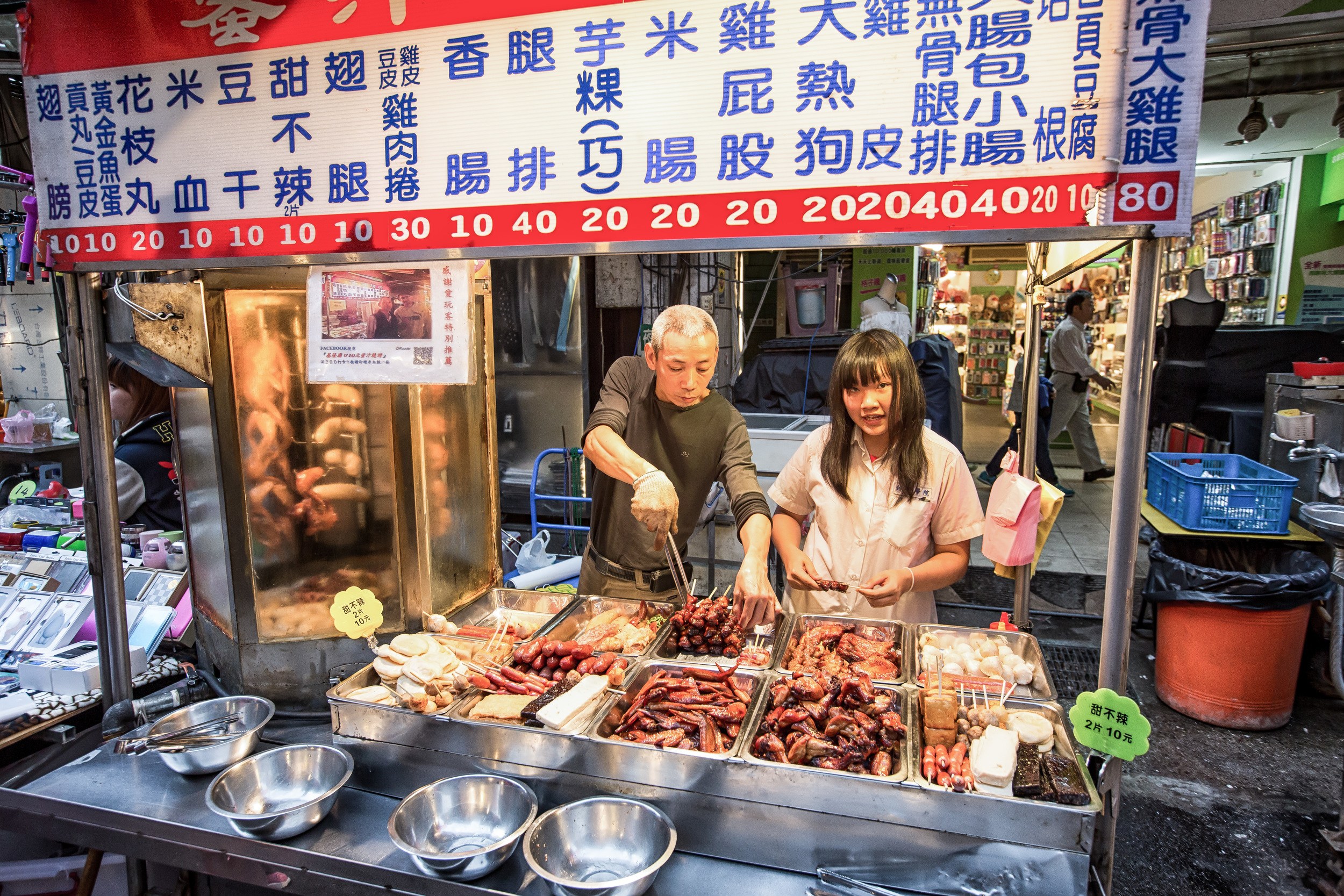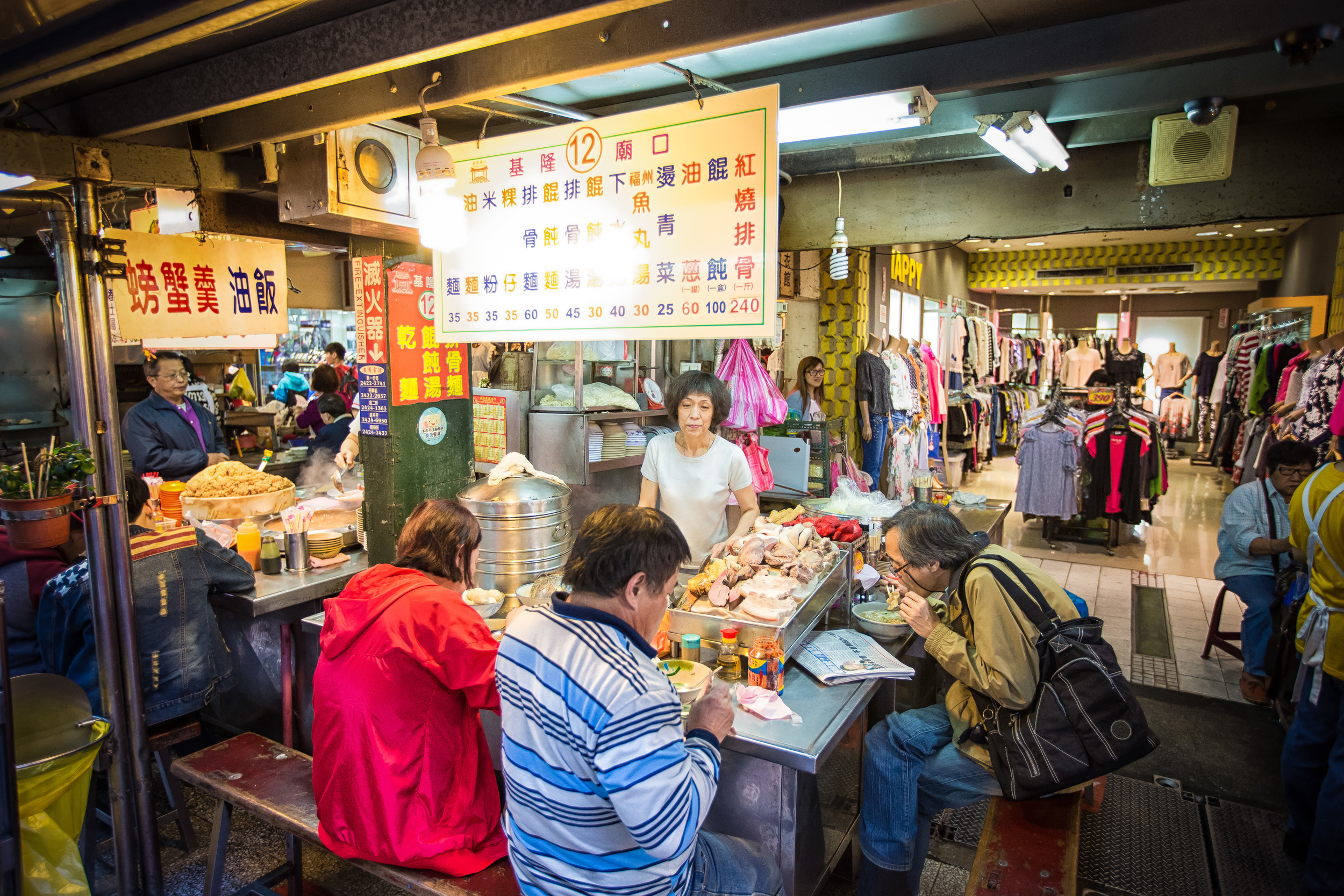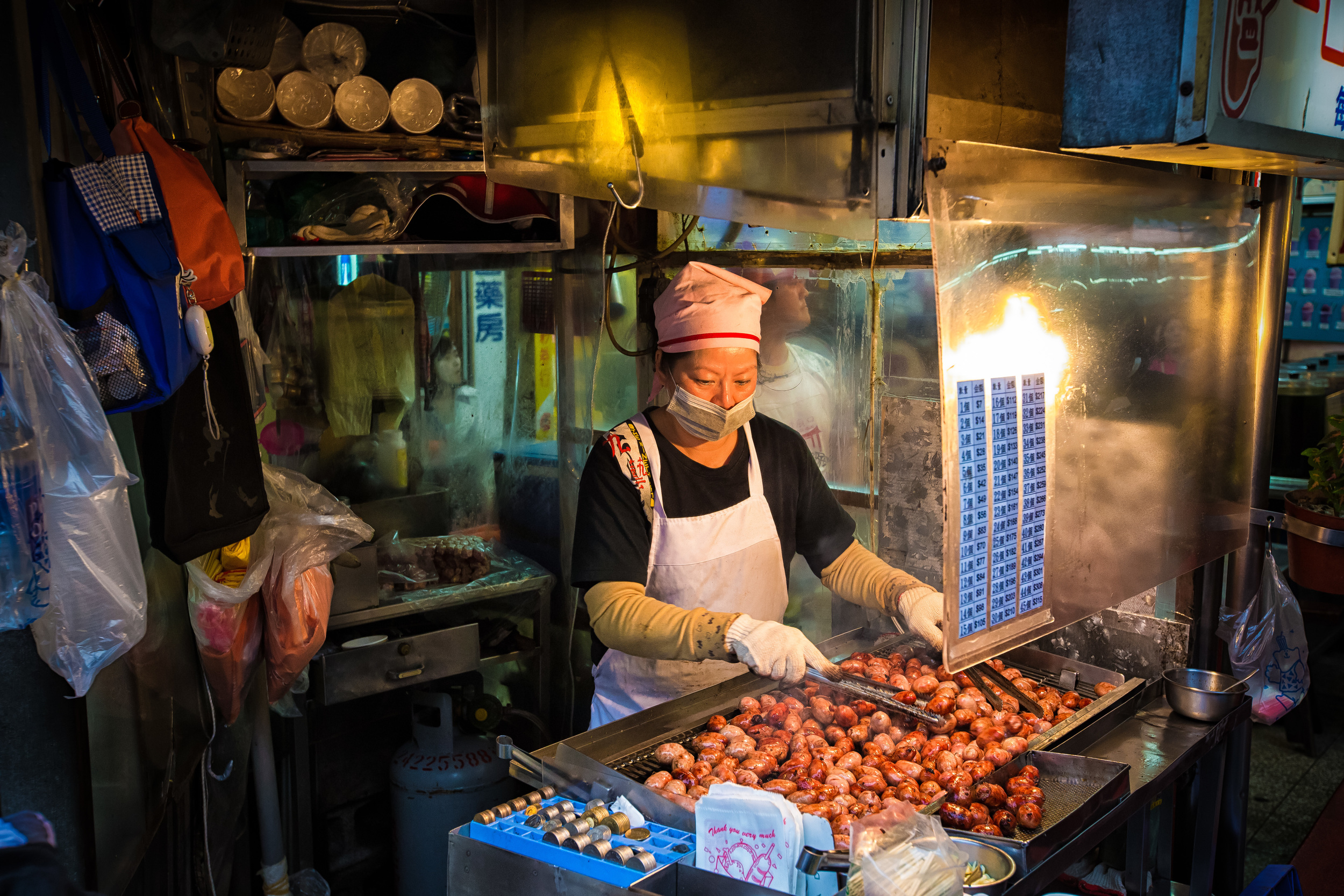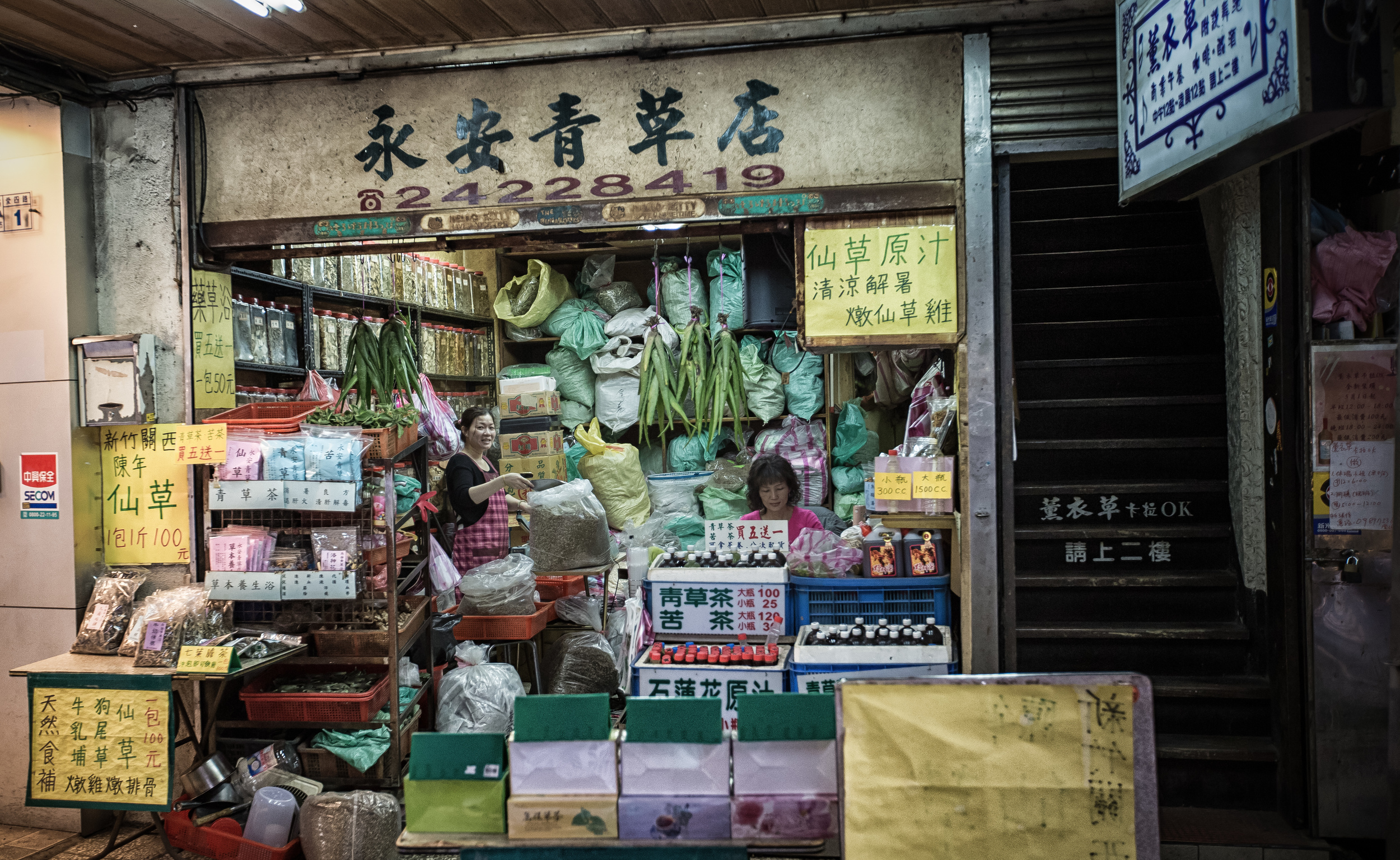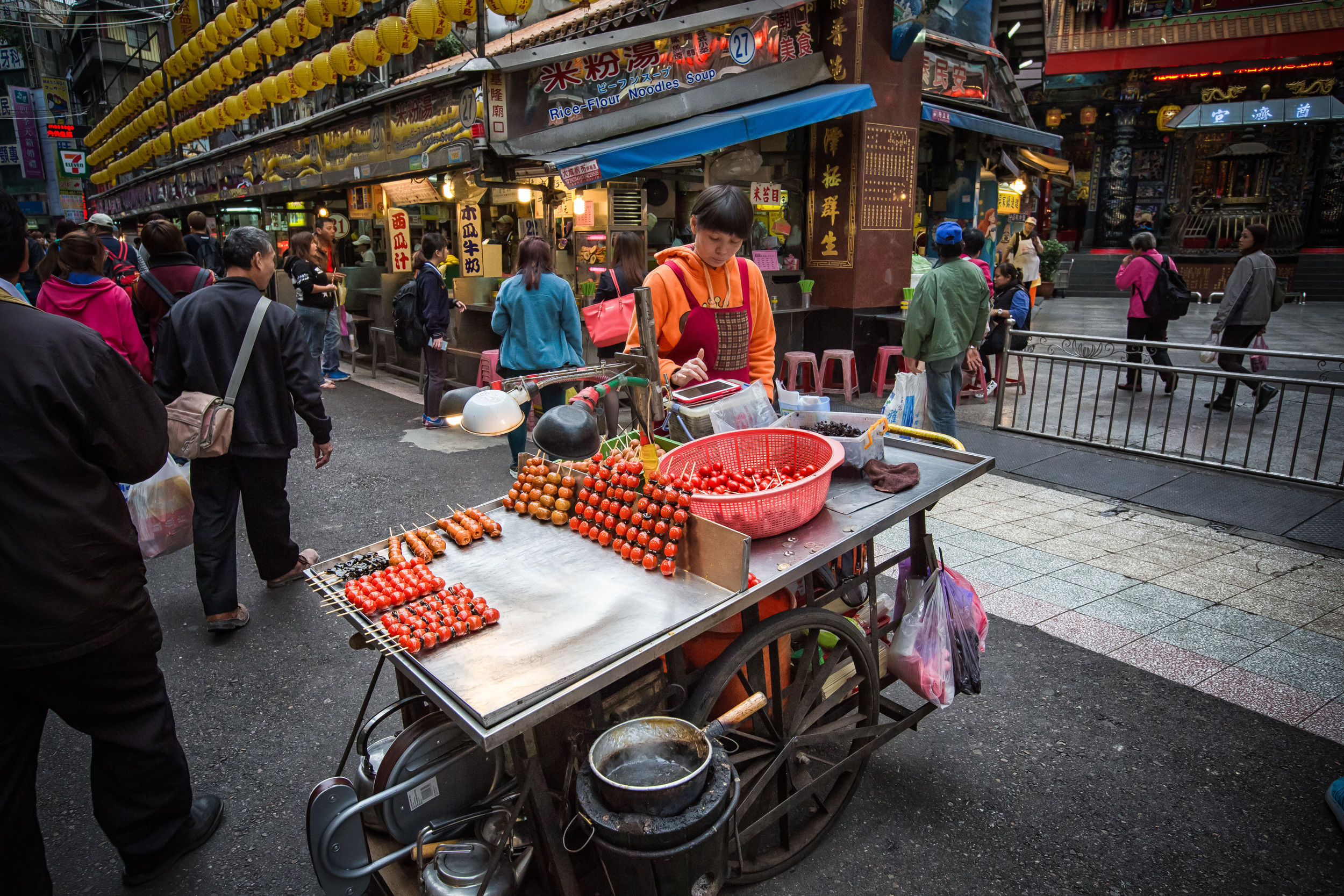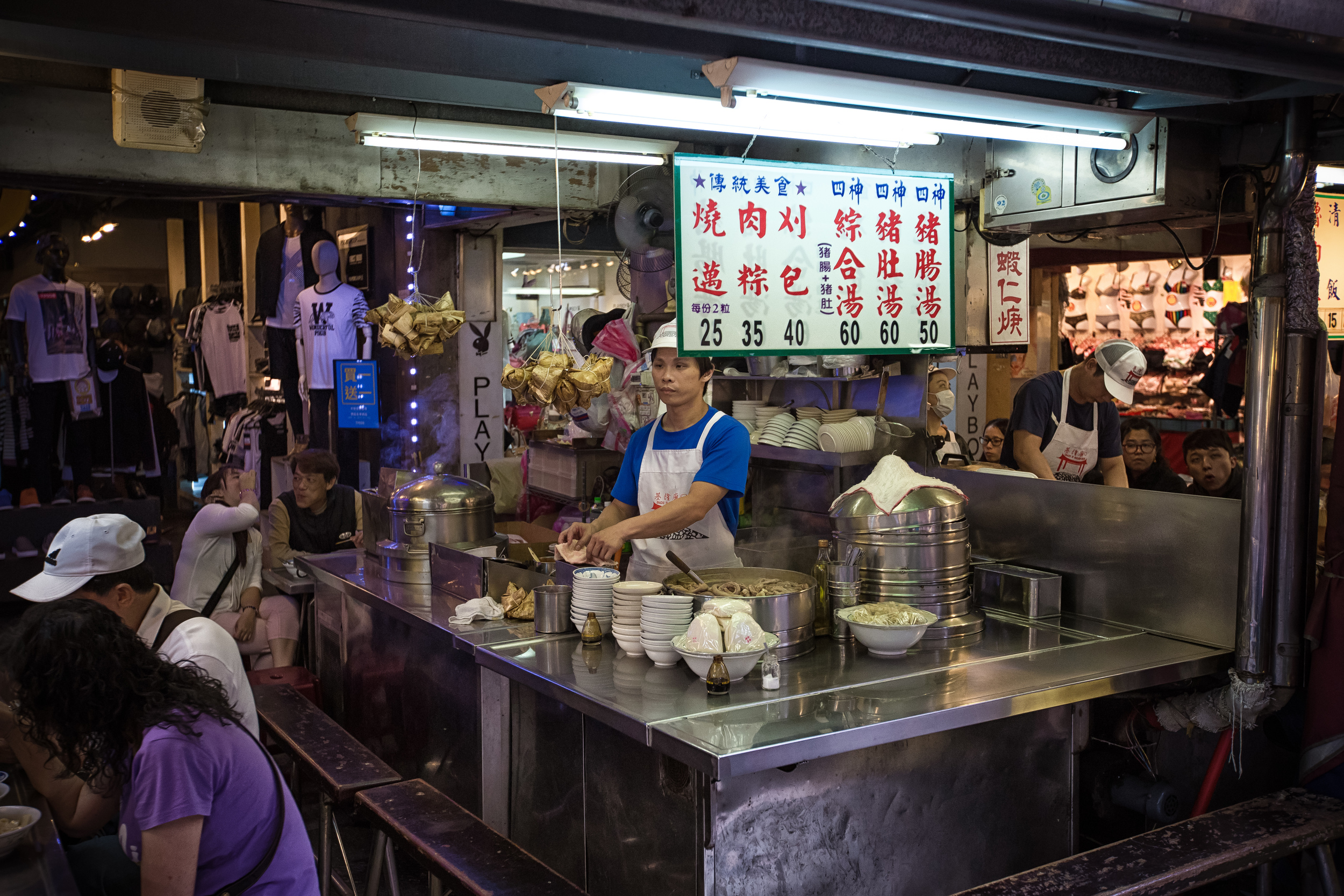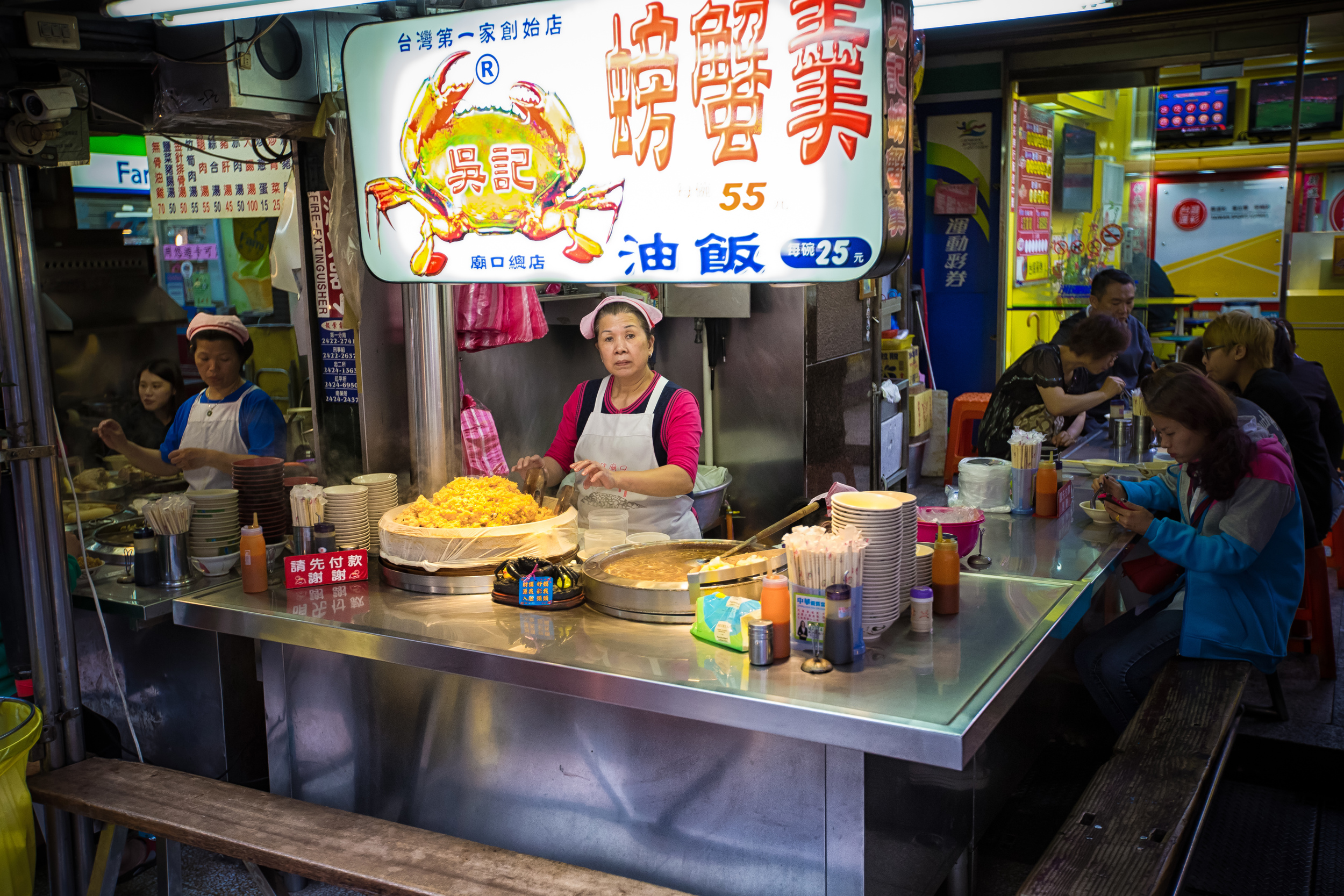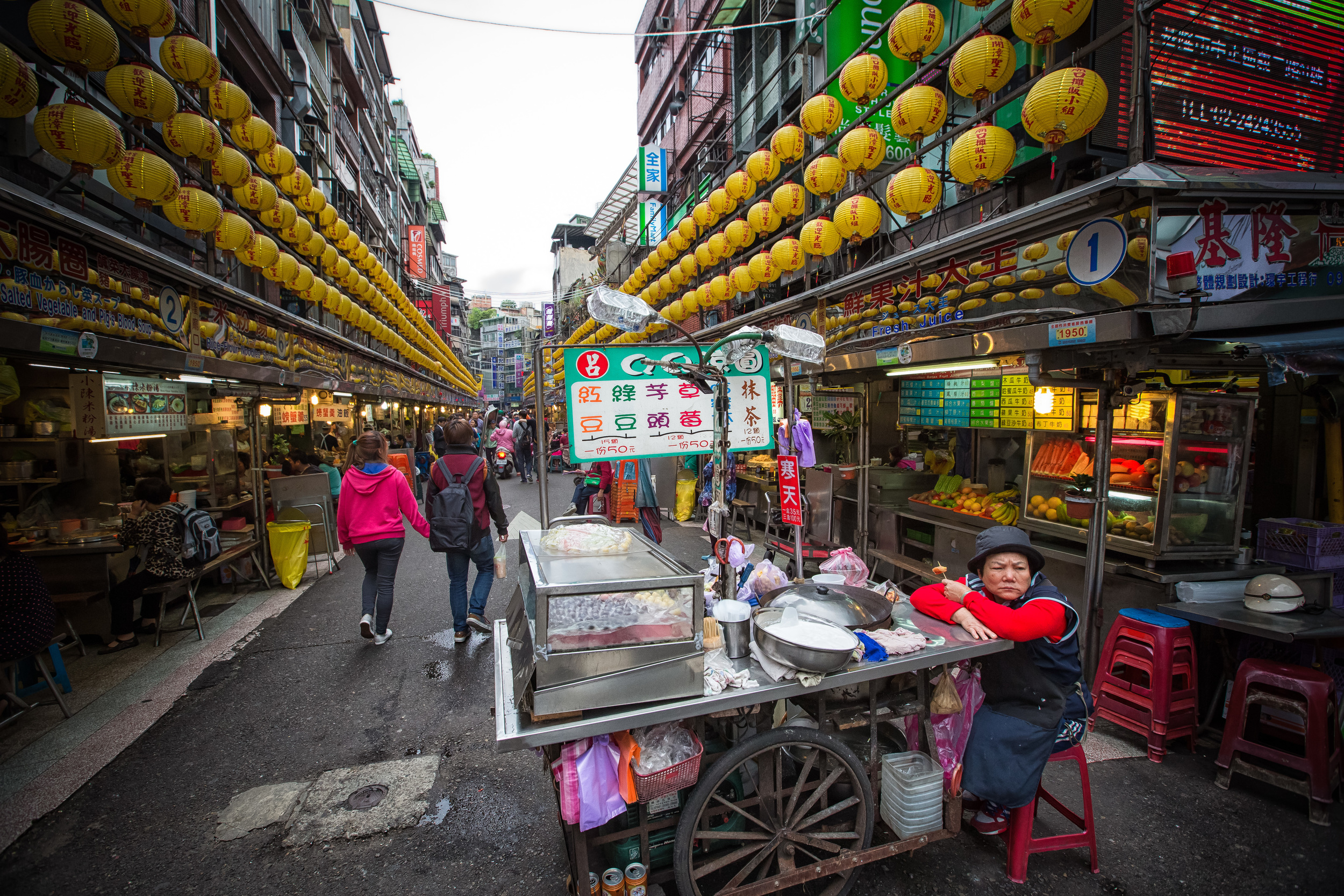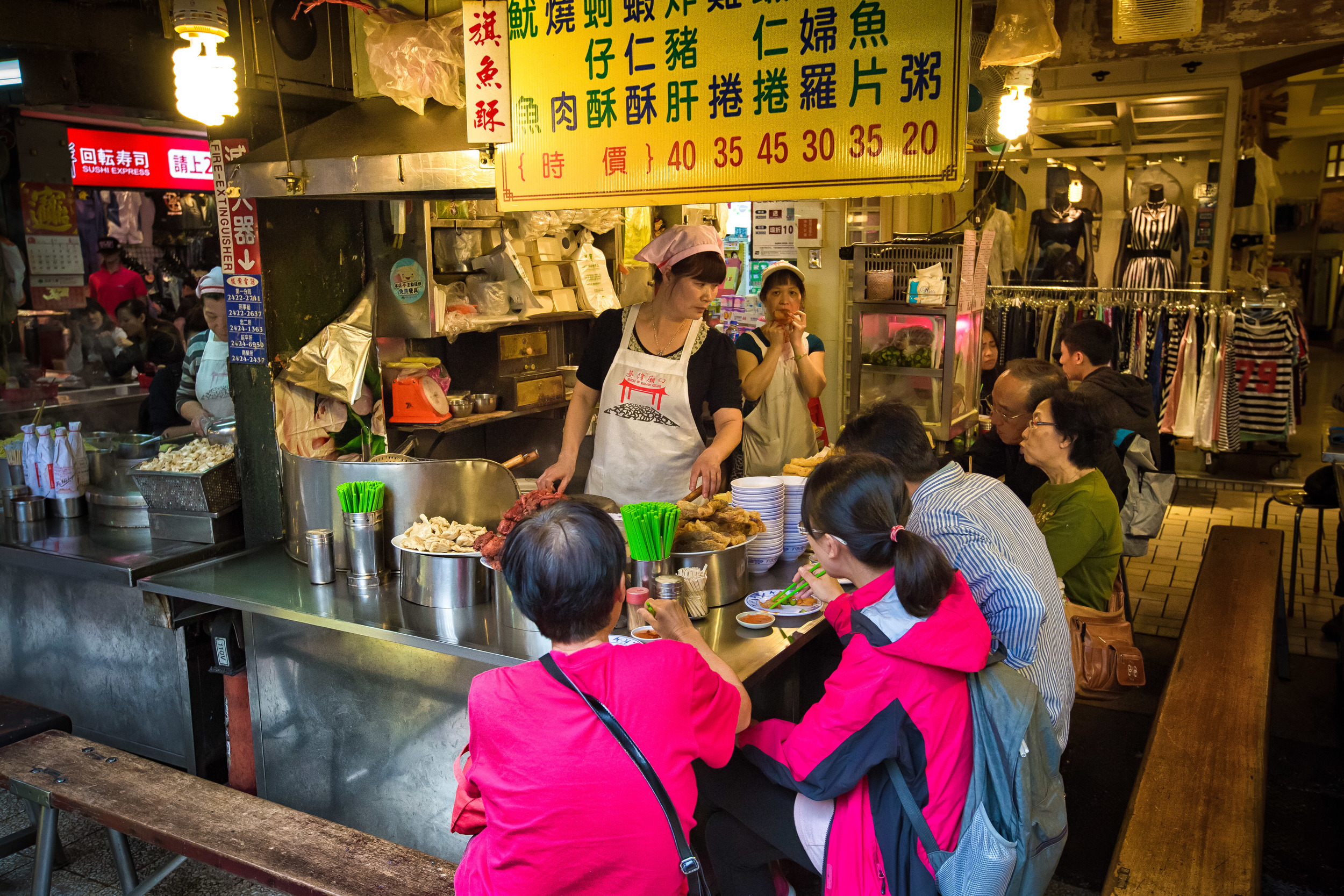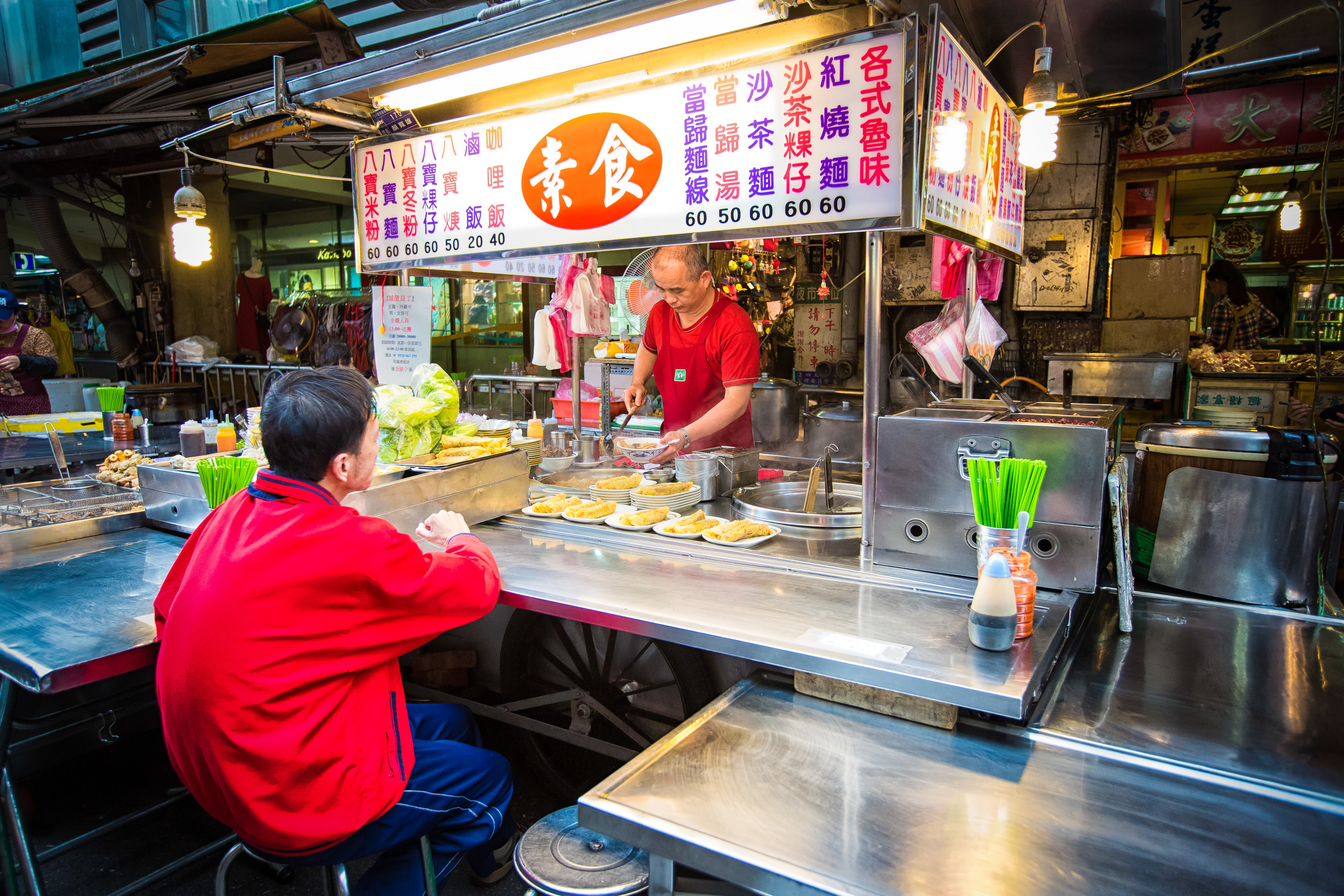Over the past few months I’ve spent quite a bit of time either in or around Taiwan’s northern port city of Keelung, one of my favorite places to visit. While some might argue that it’s an old, uninteresting city that is constantly raining, I tend to see it in a different light as these things are part of its romantic charm.
Walking around Keelung never fails to be a rewarding experience, and you can learn much about Taiwan’s history while exploring the city. This is especially true in recent years as the city has invested quite a bit in its history, with the restoration of a number of historic buildings that have been reopened as cultural attractions.
With historic attractions spanning from Dutch and Spanish Formosa, the Qing Dynasty, the Japanese-era and the post-war period, a visit to Keelung puts travelers in a unique position to be learn about places of interest that span a wide variety of Taiwan’s history.
With so many historic buildings being restored and re-opening as cultural attractions, especially those from the Japanese-era, I have a long list of places to visit, as well as a long list of places that I need to write about. So, I’ll happily be spending a considerable amount of time exploring the city over the next few years as it seems like there is always something new to see and do in Keelung!
Today, I’ll be introducing an historic Japanese-era mansion that sits atop a hill within the downtown core of the city. While it has received a bit of attention in recent years, the long abandoned mansion, once home to a prolific local political figure, lays ruined as decades of abandonment have been rather unkind. While only a short walk from the city’s popular night market, the mansion remains somewhat obscure and is surprisingly only popular among those interested in history or urban exploration, like myself.
Unfortunately, even though the Keelung City Government has invested a considerable amount of public funds restoring historic buildings within the city, it doesn’t seem like this beautiful old mansion is on the list of properties to restore. There are of course a number of reasons for this, which I’ll detail below.
Thankfully, local civic groups have taken an interest in its upkeep, and have striven to clean it up and maintain the grounds until the time comes when it can receive some official attention.
Until recently there has been very little coverage about the mansion in the English language, save for an excellent article by my friend at Spectral Codex, I figured it was about time to provide my own take on the mansion and its history. I highly recommend anyone reading this to take some time to read his piece on the mansion as he’s a much more thoughtful writer than I am.
Link: Khoo Tsu-song Old House 許梓桑古厝 (Spectral Codex)
Before I start introducing the mansion, I think it’s important to first offer a brief profile of the prolific figure who lived in it, so that you can better understand its historical significance.
Khóo Tsú-song (許梓桑)
Walking nearby the historic mansion today, you’ll find one of the typical brown road signs that indicates a cultural or historic attraction. The sign reads, “Xu, Zi-Sang Historical Home (許梓桑古厝).”
Likely to confuse most foreign tourists, the name “Xu Zi-Sang” is the pinyin romanization of “Khóo Tsú-song,” who arguably happens to be one of the most prolific Taiwanese-born figures in Keelung’s modern history, known locally by another name: the First Person of Keelung (基隆第一人).
Why they chose to go with the pinyin romanization rather than using the Taiwanese-Hokkien pronunciation is a head-scratcher - it’s certainly not how anyone would have addressed him while he was alive.
Born in Keelung in 1874 (同治13年), Khóo was brought up by his mother, who was widowed when he was quite young. The heir to the Khóo family and its fortune, as a young child he was afforded the opportunity of receiving a private education, at a time when a formal education was a rare thing in Taiwan.
Preparing for years to take the Civil Service Exam (科舉), Khóo was highly regarded for his literary prowess, especially when it came to poetry. Suffice to say, by the time he was prepared to take the exam, China found itself at war with Japan, resulting in an embarrassing defeat, and the loss of Taiwan in the process.
When Japanese forces arrived in Keelung to take control of the island, many of Khóo’s intellectual contemporaries, couldn’t accept being ruled by a foreign power, so they hopped boats with other Qing officials and left the island. The reality of Khóo’s situation however was a bit more complicated. As the twenty-one year old head of his clan, it would have been difficult for him to abandon his family, their fortune and their land holdings here in Taiwan.
So, instead of becoming a refugee from his place of birth, he made the decision to instead work with the incoming regime as the Japanese authorities sought out local scholars to work together to assist in stabilizing the political vacuum left by the outgoing regime.
This is where opinions on the man diverge as some would point their fingers and call him a traitor, while others would laud the great contributions he made over a life as a public servant - No matter what political side you take, it would be an understatement to say that Khóo’s legacy continues to reverberate in the city today, and his efforts to maintain local cultural traditions have ensured that we are still able to celebrate those traditions today.
Starting his career as a public servant at the age of twenty-one, Khóo assisted in the effort to maintain social order with the income regime, and was quickly appointed as an official in the Keelung City Office (基隆街庄長事務所書記). Keeping in mind that the Japanese used the port city as a staging point for their armed forces to make their way further inland, it was of the utmost importance that Keelung remained stable, and Khóo played an important role in ensuring that the transition went smoothly.
Having been afforded a private education while growing up, Khóo took it upon himself to adapt to the new reality by establishing a Japanese-language school (國語訓練班) for locals, and hired a private tutor to accelerate his own learning process. For his efforts, in 1901 (明治34年) he was awarded a ‘blue-ribbon’ award (藍綬紳章) by the Governor General, a highly prestigious award for someone of his youth.
Amazingly, in 1903 (明治36) at the age of twenty-nine, Khóo was appointed to a position that was essentially mayor of Keelung (基隆街庄長), and as time went by his career continued to advance as the mayor of Keelung District (基隆區長), and as congressperson of Taipei Prefecture (臺北州協議會員), receiving numerous commendations from the Governors Office in Taipei throughout his career.
Still, it’s important to keep in mind that apart from his career in public service, Khóo remained in his role as chief of the Khóo clan, as well as a prominent member of society making time to take part in local literary societies as well as serving as head of one of Keelung’s most important places of worship.
As one of the administrators of Keelung’s Qing-an Temple (慶安宮), Khóo’s influence ensured that the temple’s Mid-summer Ghost Festival remained the most prominent religious celebration in the city throughout the colonial era. Thanks to his political power, the scale of festival was larger than any of the other local religious festivals, especially those held by the local Shinto Shrines. This is one of the areas where Khóo’s influence continues to reverberate today as the annual Ghost Month celebrations in Keelung continue to be one of the busiest times of the year in the city, steeped in tradition that goes back hundreds of years.
Note: If you find yourself visiting Keelung checking out the mansion and the night market, I can’t recommend enough that you also stop by the beautiful Qing-an Temple, one of the prettiest and most historic places of worship in the city, dating back to 1780 and is one of the three most important temples in Keelung (基隆三大廟).
Interestingly, despite all of his achievements, little is known about his personal life, and even though he constructed a giant mansion for himself in the middle of the city, much of his prominence came crashing to the ground when the Japanese were forced to surrender Taiwan at the end of the Second World War.
Given the atrocities that took place when the Chinese Nationalists took control of Taiwan in the post-war era, its safe to say that Khóo saved himself quite a bit of misery by instead passing away at the at the age of seventy-one that same year.
Despite all of his achievements, his collaboration with the Japanese throughout his career would have landed him in a precarious situation with the nationalists and he would have likely ended up being just another one of the nameless faces floating face up at the port of Keelung.
In retrospect, one could argue that even though he worked with the Japanese to advance his career, he spent a considerable amount of time and effort working to preserve Taiwanese culture and traditions at a time when things like this were frowned upon - and given the era for which he lived, the architectural design of his mansion is arguably a pretty good indicator of what kind of man he was.
Qìngyú Hall (慶餘堂)
Growing up in what we’d consider prime real estate within Keelung, the Khóo family constructed their family home in what was known during the Qing Dynasty as ‘Hsintien town’ (新店街), stretching from the harbor front and encompassing much of the city’s historic economic district. Home to three of the city’s most important places of worship, Dianji Temple (奠濟宮), Qing’an Temple (慶安宮), and the City God Temple (城隍廟) as well as the Kanziding Fish Market (崁仔頂魚市), it would have been the most important section of town prior to the city’s expansion during the Japanese-era.
Within a few short years of the Japanese occupation, the colonial government proposed some pretty ambitious urban renewal and development plans (市區改正) for many of Taiwan’s major towns and cities. In the early 1900s, planning for Keelung was finalized, and with Khóo at the helm, the government went ahead with some unpopular land-expropriation initiatives. Little is written on the subject, but I can imagine that official messaging on the touchy subject went over a little smoother when citizens realized that not even the Khóo’s family home would be spared in the process.
Link: 臺灣日治時期都市計畫 (Wiki)
Having little to no public works in the city, the renewal plans essentially re-shaped Keelung and modernized it by improving roads, adding an electricity grid, and constructing public works that took care of sanitation and sewage as well as offering citizens access to clean running water for the first time.
In 1909 (明知42年), the family moved to a new home where they would live for the next two decades. It was in this home that Khóo famously held his poetry and literature society meetings, promoting Chinese classics and Taiwanese literature.
At the age of 57, close to retirement, Khóo had a new mansion built for his family on a nearby hill, nicknamed by locals as “Major-General’s Mountain” (少將腳), given that it was also home to one of the Japanese forces commanders in Keelung.
Note: It’s reported that when was asked why he constructed his mansion on the hill, he remarked that in his golden years that he hoped for peace and quiet and a house constantly full of visitors couldn’t really achieve that. Basically he wasn’t just retiring from a life as a civil servant, but also as a public figure.
Completed in 1931 (昭和6年), the Khóo family mansion was officially named ‘Qìngyú Hall’ (慶餘堂), a pretty common title for traditional residences, hailing from an ancient Chinese idiom about ‘longevity’ and ‘greatness’ (積善之家,必有餘慶). In this specific case however, I find the name of the mansion interesting given Khóo’s background as an administrator at the nearby Qing-an Temple (慶安宮), which shares the same first Chinese character as the name he chose for his mansion. Coincidence? Possibly.
While technically located within the same area of the city as the family’s original residence, this time the mansion was constructed on a hill overlooking the commercial district and the port. With other well-off neighbors, the hill would have been a nice spot to live with great views of the hustle and bustle of the city.
That being said, the family were only able to live in the mansion for about a decade until the Second World War brought with it allied bombing campaigns and Keelung one of the most important targets. For their own protection, the family moved to another location on what they thought would be a temporary basis, however even though the mansion escape destruction, Khóo Tsú-song never returned.
Passing away just as the war ended, the mansion became home to several families of Chinese refugees who illegally squatted in the building for quite a while, and as time passed by, the ownership rights of the family seems to have deteriorated, and weren’t recognized by the new government. While it is not entirely supported by evidence, there are claims that the ownership rights of the family were disregarded by authoritarian government of the time as Khóo was considered a ‘collaborator’ with the Japanese Colonial Government and was a traitor, despite his legacy being one that is fondly remembered by locals. Nevertheless, the continued confusion as to the status of the mansion’s ownership is one of the main reasons why the Keelung City Government has been powerless to have the site fixed up.
When the mansion was ultimately abandoned is unclear, but it’s been empty for decades and the years have not been kind as much of the wood has rotted, the roof caved in, and anything on the interior was looted. As mentioned above, local civic groups however have taken an interest and over the past decade have been organizing volunteer groups to assist in cleaning up the site, which attracts quite a bit of garbage.
But its not likely that we’ll see much official effort to restore the building for the foreseeable future.
Architectural Design
As mentioned above, what remains of the mansion today is merely an empty shell of its former glory. Nevertheless, from what little remains and with the assistance of historic records, we can get a pretty good idea of how the mansion would have appeared in the 1930s.
Before I go into detail, I think it’s important to point something out that I briefly touched on earlier - I haven’t really seen this mentioned in any of the articles I’ve read about the man, or the mansion while researching for this article, so I’d like to point out that the narrative that Khóo Tsú-song was somehow a race traitor is a questionable one.
Khóo was a highly-educated man and especially gifted when it came to Chinese literature. However, when it came time for him to take his Imperial exam, the Japanese took control of Taiwan and the Qing Dynasty ended shortly thereafter. As a young man having to adapt to Japanese Colonial control, he dedicated his life to a career of public service and the development of the city he called home.
When it came time for Khóo to start considering retirement, he constructed a new mansion in his home town. Built during the Showa-era (昭和), when construction techniques in Taiwan were at their most refined, he could have easily had a Japanese-style mansion built for himself, and it would have been beautiful given the views of the city and the port at the time - But he didn’t do that - he paid homage to his heritage and constructed a traditional Fujian-style mansion on that hill almost as if he was making a bold statement about his cultural heritage.
That being said, Keelung is and always has been an international city, so even though the mansion takes most of its architectural inspiration from the traditional Fujian-style architecture that is so common in Taiwan, it is also an eclectic mixture of Japanese and Western influences in addition to making use of modern construction materials and techniques.
A traditional three-sided courtyard building (閩南式三合院建築), Khóo’s mansion is a two-floor structure that also included a basement. Essentially a three floor building, it was constructed with a mixture of brick and concrete using the ubiquitous Taiwan Renga (台灣煉瓦株式會社) red bricks made during the colonial era.
Note: These famed bricks can be found in many of the buildings from that era and amazingly remain in great shape today. So, if you look closely while touring the mansion, you may find bricks with “TR” printed on the top of them.
Suffice to say, the vast majority of the three-sided courtyard houses that you’ll find in Taiwan these days are single-floor buildings. This one remains quite special because it was constructed on the side of a mountain, which was carved in a way that allowed it to have a basement and two floors. The top floor was where the traditional design was most prevalent featuring a main section and ‘guardian dragon’ wings (護龍) on the left and right as well as a courtyard in front.
Interestingly, the ‘courtyard,’ here appears similar to its contemporaries, but is mostly just a flat section of the roof that covers the floors below. With this in mind, the top floor of the mansion is considerably smaller than the two floors below, but is also the most ornate part of the building. Likely used by the family as an ancestral shrine (given Khóo’s position as the head of the family) as well as providing a living space for the family’s servants within the wings, the architectural prowess used here was quite genius in its design.
Note: The Neihu Red House (內湖紅樓) might be of interest regarding brick Japanese-era mansions constructed with a fusion of architectural design.
Like many Hokkien-style buildings, the mansion was beautifully decorated with ornate cut-porcelain carvings (剪瓷雕) of flowers and birds and features some pretty cool bamboo windows (竹節圓窗) on either side of the door on the main wing. Similarly, one of the distinctive design features of the building are the ox-eye windows (牛眼窗) that you’ll find on each of the wings, which are Western Baroque-inspired inclusions.
Unfortunately there isn’t much I can say about the design of the floors below as they have been pretty much emptied out. The stairs and anything else that once existed inside on both the first floor and the basement have disappeared over the years as the mansion was left to rot and open to looters.
The last thing I’ll highlight about the design is the stone-washed triangular staircase located in the center-front of the building that allowed visitors to reach the top floor from the outside. Today, this set of stairs is pretty much the only method for visitors to reach the top floor of the building as the wooden stairs within the interior of the building have rotted away and were removed at some point over the past few decades.
The stairs are part of a network of stairs that were constructed especially for the mansion as there are two paths from ground level that were constructed for the building.
In the records that I’ve seen, it was reported that when the mansion was under construction, it was far too expensive to have laborers carry the bricks for the building up the hill, so Khóo enlisted the help of local children who were paid a cent for every brick that they carried up the hill.
Today, the mansion lies in ruins with the roof having already caved in and the staircases between floors taken away (likely by volunteers for the safety of those visiting). Although it is an empty shell of its former self, the building has interestingly been overtaken by nature with trees and roots growing along the outer walls of the mansion reminiscent of the popular Anping Tree House (安平樹屋) in Tainan.
The Keelung City Government for its part has set up some plaques with information about the mansion’s history, and the set of stairs that leads you from ground level to the mansion has been adorned with some interesting murals depicting the building in its original state. Unfortunately for the reasons mentioned above, that’s about the extent of what they’re able to do at this point until the legal situation of its ownership is settled. Visiting the mansion is pretty easy as it is a simple detour from the popular Miaokou Night Market area, so if you are planning on enjoying a day exploring the city, it shouldn’t take you too long to get there to check it out.
Getting There
Address: #15, Lane #2 Aisi Road, Keelung (基隆市仁愛區愛四路2巷15號)
GPS: 25.127360, 121.744070
Situated on a hill that overlooks Keelung Harbor, the long-abandoned mansion is currently obscured by all of the modern buildings that have been constructed around it. For decades it has been hidden in plain sight within close proximity to the city’s famed Miaokou Night Market with most unaware of its existence.
These days, it is a bit more well-known, but still somewhat of an obscure tourist site within the city that the vast majority of tourists tend to miss.
The area around Keelung Harbor is very walkable, so if you find yourself in the city looking for something to do before the sun goes down and the night market comes to life, a stop by this historic mansion is a pretty great option given its close proximity.
In a departure from my usual style, I’m only going to be providing walking directions for this one. The reason for this is because the mansion is in pretty close proximity to the night market, so if you take the train to the city, you can get there pretty easily. On the other hand, if you’re driving a car, you’re going to have to park in one of the parking garages near the night market and you’ll end up walking from the there.
The narrow roads near the night market don’t really make the route to the mansion accessible most of the time, and if you attempt it, you’ll likely find yourself stuck for quite some time, without any opportunity to find a parking spot nearby. So, if you’ve got a car, park it somewhere near the harbor and walk around the downtown core. It’ll be a far more enjoyable experience, I promise you.
Walking through the night market area on Rensan Road, you’ll make a right turn on Aisi Road (愛四路) where you’ll continue walking until the narrow road starts to curve right. When it does you’ll notice a set of stairs on the left side of the road with a brown sign that (probably still) reads “Xu, Zi-Sang Historical Home.”
From there you’ll simply walk up the hill where you’ll find the mansion at the end.
Along the way you’ll want to take note of some of the murals on the walls that depict how the mansion originally appeared.
Once you arrive, you’ll want to be careful of where you’re walking as you explore as some of the sections of the mansion aren’t as stable, especially in the areas where the stairs between floors once existed.
Watching over the modern development of Taiwan’s Northern Port City for almost a century, the old Khóo mansion is one of the city’s historic treasures, and even though it is in pretty bad shape, its continued existence is an important look into the history of the city. While it might seem like a somewhat obscure tourist destination, if you find yourself in Keelung and have a bit of time, visiting won’t take too much of your time, and you’ll be rewarded with a nice view of the city when you’re there.
References
許梓桑古厝 | Khóo Tsú-song old house (Wiki)
許梓桑 (Wiki)
許梓桑古厝 (國家文化資產網)
基隆-仁愛 慶餘堂 - 許梓桑古厝 (Just a Balcony)
廟口後山的驕傲 讓許梓桑古厝再美麗一次 (微笑台灣)
基隆許梓桑古厝─隱身於鬧市的殘破建築,藏著雨都的一段故事 (StoryCircle)
許梓桑古厝,基隆夜市旁的廢墟打卡點,值得飯後一遊 (小島赴約)
基隆 許梓桑古厝 慶餘堂 (時空旅人)
許梓桑古厝 (hirofumi的網路記事本)
雨港古宅。基隆許梓桑古厝 (島嶼步行日記)
基隆 (許梓桑古厝) (旅遊通部落格)
Khóo Tsú-song Old House 許梓桑古厝 (Spectral Codex)
許梓桑與日治時期的基隆中元祭 (吳蕙芳)




